El Garmin Forerunner 255 se ha hecho mayor y ahora pasa a ser una familia. A los dos modelos disponibles hasta ahora (normal y versión Music) se añade un tamaño más pequeño.
Pero no sólo ha crecido por haber más modelos que completan la serie, el FR255 es un reloj que ha subido de categoría. Ahora la línea de separación con el Garmin Forerunner 955 (también presentado el mismo día) es cada vez más pequeña.
De hecho podría resumir todo y decirte que el nuevo 255 es básicamente un 945 mejorado pero sin mapas. Por no hablar que ha pasado claramente al FR745 siendo un reloj superior. De hecho el Forerunner 255 se convierte en un reloj de triatlón porque soporta este modo junto a otros como natación en aguas abiertas, algo que nunca había ocurrido.
Siempre me gusta recordarte el origen de los dispositivos que pruebo. En este caso el Forerunner 255 de la prueba ha sido cedido temporalmente por parte de Garmin. Una vez terminado el análisis se irá por donde ha venido por lo que no existe compensación por parte de la marca a cambio de un análisis más positivo. Esto me da la posibilidad de contarte todo lo bueno, pero también todos los defectos de cualquier dispositivo.
Así que si te gusta el trabajo que realizo en estas pruebas y quieres colaborar con la página web, puedes hacerlo a través de los enlaces publicados. Y no dejes de unirte al canal Telegram porque ahí publico un montón de chollos de forma regular. ¡Gracias por tu soporte!
Navegar a secciones específicas
Garmin Forerunner 255
Funcionamiento global
Posibilidades de entrenamiento
Plataforma y aplicaciones
Autonomía
Acabados y comodidad
Relación precio/prestaciones
TOTAL
Ahora el Garmin Forerunner 255 es un reloj de triatlón, ya no sólo de carrera en asfalto. Eso hace que haya subido algunos peldaños en cuanto a todo lo que ofrece. Por si esto fuera poco, recepción de satélites multibanda para tener la máxima precisión y más métricas de rendimiento y entrenamiento.
- Chipset satélite multibanda en un gama media
- Perfiles para triatlón y natación en aguas abiertas
- Seguimiento de variabilidad de pulso
- Relación precio/prestaciones muy alta
- Con altímetro barométrico
Necesita mejorar
- No tiene la métrica Stamina
- Se echa en falta ClimbPro
- La autonomía es correcta, pero no estelar
Es necesario accesorio externo para disfrutar de la potencia en carrera- No soporta de forma nativa potenciómetros de carrera de otras marcas (como Stryd)
Novedades Garmin Forerunner 255
Como es habitual y más aún si comparte la fecha de presentación con el nuevo tope de gama de los Forerunner, el FR255 no presenta nada nuevo o exclusivo. Pero tratándose de una versión ligeramente recortada del nuevo FR955 la lista de novedades tampoco es ninguna tontería.
- Se convierte en una familia y hay dos versiones disponibles, Garmin FR255 y Garmin FR255S. La diferencia es el tamaño. Hay versiones con o sin música de ambos.
- Pantalla de 1,3″ en el FR255 y de 1,1″ en el FR255S (el FR245 usaba pantalla de 1,2″). Sin control táctil
- El FR255 es de 45,6mm de diámetro y el FR255S 41mm. 49 gramos y 39 gramos de peso respectivamente
- Sensor de pulso óptico Garmin Elevate V4, que se estrenó con el Garmin Venu 2
- Sistema multibanda (dual-band) en todas las versiones
- Con altímetro barométrico
- Hasta 30 horas con uso de GPS en el 255, o 26 horas en la versión 255S
- Seguimiento de variabilidad del pulso (VFC o HRV)
- Informe matutino con la calidad del descanso, variabilidad del pulso durante el sueño, previsión metereológica y entrenamiento para el día
- La variabilidad del pulso (HRV) se usa como un dato más a la hora de mostrar el estado de entrenamiento para intentar ser más preciso
- Pantalla de estado de entrenamiento con más valores: estado de VO2Max, de HRV y de carga de los últimos 7 días (ATL o fatiga en TrainingPeaks)
- Nuevo widget de carrera con días hasta la prueba, el tiempo en ese lugar y más detalles basados en tu historial
- Estimación de potencia en carrera con accesorio externo (sensor HRM-Pro o Running Dynamics Pod)
- Posibilidad de modificar la configuración desde el reloj o, por fin, también desde la aplicación móvil
- Dispone de perfil de triatlón y natación en aguas abiertas
- Perfil HIIT para grabar actividad, con entrenamientos animados e instrucciones. Se estrenó con el Garmin Venu 2
- Dispone de Garmin Pay en cualquiera de sus versiones
- Acceso directo desde el reloj a la tienda Connect IQ para actualizar los elementos vía WiFi
- Disponible en cinco colores: blanco, negro, rosa, azul, gris. No todos están disponibles para todas las versiones, depende de tamaños y si tienen música
El salto cualitativo que ha dado el Garmin Forerunner 255 con respecto al 245 es muy grande. No sólo en prestaciones totales, también en tipo de reloj. Ha dejado de ser un reloj destinado a correr para convertirse en un reloj completo de triatlón. Tal es así que ahora mismo el 745 ha quedado totalmente fuera de juego y en muchos aspectos puede ser perfectamente sustitutivo del 955.
Todos los modelos de la gama Forerunner 255
Como decía al principio ahora el 255 se ha convertido en familia: hay diferentes tamaños y en ambos casos versiones con o sin música. En total son cuatro modelos:
- Garmin Forerunner 255S (41mm de diámetro)
- Garmin Forerunner 255 (45,6mm de diámetro)
- Garmin Forerunner 255S Music
- Garmin Forerunner 255 Music
Las versiones Music permiten descargar música en el reloj desde plataformas online como Spotify o Amazon Music (o cargarlo desde el ordenador). Pero no es un requisito para tener otras cosas como el chipset multibanda para recepción de satélites que tan buen resultado está ofreciendo.
En definitiva, simplemente debes elegir el tamaño del reloj (y en consecuencia de la pantalla) y si vas a escuchar música durante tus entrenamientos.
Lo que hay que saber del Garmin FR255
El Garmin Forerunner 255 es uno más de la familia Forerunner, así que ya sabes lo que te vas a encontrar. Todo en él continúa siendo continuista y no hay sorpresas de ningún tipo.
No hay pantalla táctil como en el caso de los 955, pero realmente al no disponer de mapas no es necesario. El control se hace a través de los clásicos 5 botones, tres en el lado izquierdo y dos en el derecho.
Los botones son metálicos y de buen tacto, pero otra de las diferencias con respecto a los 955 es que no están grabados con una segunda función. Es decir, presionando el botón inferior izquierdo se accede a la música, eso en el 955 está grabado en el botón pero en el 255 es totalmente liso.
Lo que sí comparten es pantalla, que es de 1,3″ en ambos casos y con una resolución de 260×260 píxeles. Es un cambio importante con respecto a los 245 porque esa 0,1″ de tamaño se deja notar.
Eso el 255, porque el 255S al ser más pequeño ve reducido el tamaño de la pantalla hasta 1,1″. En este caso ya andamos en terrenos más pantanosos y quizás se te pueda quedar pequeña.
Como ya sabrás, hay varias pantallas de reloj que puedes configurar directamente desde el reloj, es algo que todavía no podemos hacer desde la aplicación del teléfono. Porque la configuración desde el móvil es otra de las nuevas posibilidades que se añaden en el 255. Principalmente lo usaremos para configurar los perfiles de deporte, pero también admite otro tipo de ajustes.
Todos los cambios son inmediatos, no es necesario realizar una sincronización para ver cómo queda la pantalla de datos elegida. Es lo que más vas a agradecer porque podrás hacerlo a velocidad de teléfono móvil y no entrando y saliendo de diferentes menús.
Si no te valen las pantallas de reloj que tienes disponibles en el reloj, siempre puedes instalar cualquiera de las miles que hay a través de Connect IQ.
Ocurre lo mismo con los widgets, podemos añadir o quitar los que vienen por defecto. O cambiar el orden en el que se muestran. En este caso sí es posible hacerlo a través de la aplicación del teléfono. E igualmente, también podemos descargar otros widgets desde Connect IQ.
El Garmin Forerunner 255 no gira sólo en torno al deporte, también hay métricas generales de salud que podemos registrar y analizar acerca de nuestra vida diaria. Pasos, frecuencia cardíaca, pisos ascendidos (porque ahora tenemos altímetro barométrico), Body Battery (una métrica que interpreta la energía restante para todo el día), análisis de sueño, etc. Eso lo puedes ver en los widgets del reloj, o también directamente en la aplicación.
Pero todo esto ya lo teníamos disponible en otros relojes de la marca desde hace ya unos cuantos años. Lo que sí es nuevo es el «Informe Matutino». Una pantalla que aparece todas las mañanas y que nos informa de datos de cómo te encuentras con respecto a tu descanso, carga de entrenamiento, variabilidad de pulso durante la noche y un recordatorio de cuál es el entrenamiento que tenemos que realizar para el día.
La principal diferencia con respecto al Garmin FR955 es que el 255 no ofrece la métrica de «Predisposición de entrenamiento», el resto de información que muestra el Informe Matutino es idéntico (puedes ver todo esto más detallado en el análisis del 955).
Predisposición de entrenamiento es una métrica que engloba todos esos números que van apareciendo en el informe diario y lo representa en un número fácil de ver, por si no quieres tomar decisiones en función de todo lo demás.
Hay cambios con respecto a la sugerencia de entrenamientos, en primer lugar porque ahora considera más datos para hacer la recomendación (como la variabilidad de pulso), pero principalmente porque ya es posible que los entrenamientos sugeridos sean con un objetivo que tengamos en nuestro calendario. Porque hay un widget nuevo, el calendario de carreras.
Podemos introducir una competición a través de Garmin Connect y a partir de ese momento podrás ver en el reloj cuánto tiempo queda para que llegue dicho evento.
Ya en el reloj podrás ver tiempo estimado para completar la carrera en función del VO2Max actual y la temperatura que puede hacer según los históricos.
Más allá del complemento «estético» de ver cuándo es tu carrera, la parte importante es que a partir de ese momento todas las recomendaciones de entrenamiento diario girarán en torno a ese objetivo. Ya no serán recomendaciones genéricas sino que habrá un plan estructurado para esa carrera en particular.
Como los entrenamientos diarios tienen en cuenta el entrenamiento pasado, recuperación, estado de entrenamiento y demás métricas que hemos visto anteriormente, se trata de un plan de entrenamiento totalmente dinámico en función a tu estado real. Eso sí, ese plan de entrenamiento no estará enfocado a ningún objetivo en particular (por ejemplo correr una maratón por debajo de 3 horas).
Eso sí, debes saber que por el momento sólo es válido para competiciones de ciclismo o carrera, pero no para triatlón. Y no sólo es en los entrenamientos, es que en el calendario tampoco podrás añadir una prueba de triatlón.
Pero siguiendo con el informe matutino, lo siguiente que veremos es el estado de variabilidad de pulso. Utilizo la foto del 955, porque para tener una comparación con respecto a la media de las tres últimas semanas tenemos que llevar el reloj al menos durante 19 días, y Garmin sólo me presta el reloj durante 14… así que no puedo llegar a los días :-).
El reloj realiza la medición de variabilidad de pulso durante toda la noche y podemos ver en gráfica cómo ha sido la evolución junto con la media y máxima de la noche. Por clarificar, se suele considerar una variabilidad alta como signo de estado descansado y recuperado, mientras que una variabilidad baja denota estrés o fatiga.
El estado de VFC tiene en cuenta la variabilidad de pulso a lo largo de toda la noche, y compara el dato con la media de las tres semanas anteriores. Es por este motivo por el que nada más comprar el reloj tendrás que esperar bastante tiempo hasta ver esta información completa.
En cuanto al dato en sí mismo es específico de cada persona por lo que no tiene sentido compararlo con el de tu compañero de entrenamiento, e incluso difiere mucho a lo largo del año y de nuestra actividad.
Durmiendo con dos relojes los datos no son exactamente los mismos, pero sí muy similares. La diferencia se produce en que el reloj toma el valor de referencia en tiempos determinados y no es constante, por tanto los picos pueden ser diferentes.
Continuando con más métricas que han cambiado tenemos el estado de entrenamiento, ahora más completo.
Es viejo conocido, pero ahora muestra más métricas para ayudar a descifrar el por qué de los mensajes que ofrece. En mi caso está diciendo que estoy ahora mismo en peligro de sobreentrenamiento, lo cual es en parte cierto.
Mi VO2Max está descendiendo, lógico porque he hecho un descanso en los entrenamientos después del Ironman. Mi variabilidad de pulso está desequilibrada por lo que acabo de comentar; y mi carga aguda es alta porque hasta hace una semana era prácticamente inexistente. Sabiendo de dónde vengo y el por qué de esos datos sé que no hay peligro de lesión, pero es algo a tener en cuenta.
Te habrás fijado que he hablado de «carga aguda de entrenamiento». Es un pequeño cambio con respecto a cómo lo tenía en cuenta antes, diluyendo las cargas elevadas con el paso del tiempo. Es decir, si hoy haces un entrenamiento fuerte de series sabes que mañana vas a estar bastante fatigado, pero dentro de 5 días el cuerpo se habrá recuperado.
La carga de entrenamiento es la media diaria durante 7 días. Anteriormente esa carga elevada estaba presente durante todos esos días y podía producir mensajes de estar fuera de balance, mientras que ahora esa carga se va diluyendo a medida que pasan los días para ofrecer una imagen más fiel de lo que has acumulado.
Resumiendo todo, éstas son las nuevas métricas que puedes ver en el 255 y lo que debes tener en cuenta con ellas:
- Estado de VFC: La media de variabilidad de pulso durante la noche, que ayuda a descifrar cuál es el estado de nuestro cuerpo y la tendencia con respecto a la fatiga y el descanso. Es la media nocturna comparada con respecto a las tres semanas anteriores.
- Estado de entrenamiento: Tiene en cuenta la tendencia de VO2Max, de variabilidad de pulso y de carga de entrenamiento. Sirve para poner en perspectiva lo que estamos haciendo con nuestras últimas semanas de entrenamiento.
- Carga aguda de entrenamiento: La carga de entrenamiento de los últimos 7 días, pero diluyendo los entrenamientos más intensos con el paso de los días y la recuperación.
En definitiva, todo esto son los aspectos básicos del reloj más algunos añadidos que considero fundamentales comentar. Pero dejo para hablar de ello con más detenimiento dos añadidos cruciales para este modelo. En primer lugar la estimación de potencia en carrera, que podría tener una implantación con algo más de cariño. Y después hablarte de la adición del chipset GNSS multibanda, algo único en relojes de este rango de precios.
Estimación de potencia en carrera
Garmin por fin añade la estimación de potencia en carrera a sus relojes, al menos de forma oficial. Pero es algo limitado con respecto a lo que podemos ver en la competencia.
Creo que, después de tanto tiempo esperando, Garmin no ha realizado un buen trabajo con respecto a la potencia en carrera. A diferencia de Polar o COROS, en el caso de Garmin es necesario utilizar un sensor externo para poder obtener éste dato, y no se obtiene simplemente desde la muñeca. En concreto alguno de estos sensores de Garmin:
- Sensor de pulso HRM-Run
- Sensor de pulso HRM-Tri
- Sensor de pulso HRM-Pro
- Sensor Running Dynamics Pod
En caso de llevar uno de estos sensores mientras corres entonces sí tendrás acceso a la estimación de potencia, que incluye mostrarla en tiempo real y grabarla en el archivo de actividad, así como poder configurar entrenamientos avanzados con objetivo de potencia (además de los habituales de ritmo o frecuencia cardíaca). También podemos definir zonas específicas de potencia para carrera
Si retrocedemos unos cuantos años atrás, ya hablábamos de una aplicación de Connect IQ que se llamaba Garmin Running Power, que Garmin lanzó en versión beta y sobre la que no ha habido grandes cambios. Garmin simplemente ha añadido esa aplicación de forma nativa al reloj. Si ya la usaste en el pasado ya sabes lo que puedes esperar al usarlo ahora, lo único que al estar integrado de forma nativa te permite utilizar la potencia para entrenamientos por fases.
Por seguir ahondando en la llaga, Garmin no permite mostrar de forma nativa los datos de ningún otro sensor externo como puedes ser Stryd. Según indican porque Stryd no utiliza el estándar apropiado, pero eso no ha impedido a Suunto, Polar, Wahoo o COROS hacerlo (es decir, todos los demás).
Si quieres utilizar Stryd, tendrás que seguir haciéndolo a través de sus diferentes aplicaciones pero sin acceder a las ventajas que supone tener una integración nativa.
Éstos son los campos de datos que podemos seleccionar en la configuración de pantallas:
- Potencia
- Indicador de potencia
- Potencia media
- Potencia de vuelta
- Potencia de última vuelta
- Potencia máxima
- Zona de potencia
Si lo comparamos con las opciones que tenemos en ciclismo, hay muchísimas menos opciones. En esta galería puedes ver en primer lugar las opciones para carrera, las siguientes imágenes corresponden al perfil de ciclismo.
Obviamente no hay campos de dinámicas de ciclismo o similares, pero se agradecería algo de paridad con métricas interesantes como pudiera ser %FTP, tiempo en zonas, factor de intensidad, medias de 3s o 10s, etc.
Por tanto se puede considerar que es una integración «a medias». Me encantaría que soportase de forma nativa a Stryd para poder utilizarlo igual que en relojes de otras marcas. Eso permitiría realizar entrenamientos por potencia de forma nativa sin tener que estar descargando aplicaciones de Connect IQ. Quizás lo veamos en el futuro porque Garmin no ha cerrado la puerta, pero de momento es lo que tenemos.
Por último tendrás la pregunta más importante… ¿Son fiables los datos de potencia de Garmin? Pues son tan fiables como los datos de potencia de cualquier otra marca. No hay un estándar fijado y en todos los casos se trata de un algoritmo en función a diferentes parámetros. No es posible comparar los datos de potencia entre dispositivos de diferentes marcas, pero sí permite compararlos consigo mismo.
Pero sobre todo eso ya hablé en el pasado. Si estás interesado en la estimación de potencia en carrera tengo varios artículos (y vídeos en YouTube) al respecto.
Multibanda
Al igual que en el FR955, todas las versiones del FR255 incluyen el nuevo chipset multibanda de doble frecuencia. Es una diferencia importante con respecto a los Fenix 7 o Epix, en los que hay que irse a versiones más caras (cristal de zafiro) para disfrutar de este chipset.
Si ya me resultaba algo extraño en el 955 (no hubiese sido descabellado que lo hubiesen reservado sólo para el Solar), más notable resulta en el modelo más económico.
Pero antes de entrar en detalles de cómo es el funcionamiento quiero aclarar todos los aspectos técnicos. Básicamente es lo que llevo escribiendo desde la presentación del VERTIX 2 de COROS, pero toca volver a comentar al respecto.
Los satélites transmiten datos en diferentes frecuencias, algo así como el router de tu casa. Al igual que ocurre con tu router Wi-Fi, usando diferentes frecuencias podemos obtener beneficios en velocidad o en distancia de señal. Es un mero ejemplo y son dos cosas que no tienen nada que ver, pero espero que con eso cojas la idea.
Los sistemas de doble frecuencia permiten mejorar el posicionamiento en lugares de recepción complicada como en bosques, ciudades donde la señal rebota en edificios, etc. Al recibir información de más de una señal de radio de cada satélite, el dispositivo puede diferenciar entre señal real y señal rebotada.

- GPS desactivado
- Sólo GPS
- Todos los sistemas: el reloj priorizará entre GPS/GLONASS/Galileo/BeiDou/QZSS en función de cuál ofrezca mejor rendimiento en ese momento)
- Todos los sistemas más multibanda: como el modo anterior pero utilizando las frecuencias L1 y L5 (sólo en los modelos con cristal de zafiro)
- Auto Select: Es el nuevo modo de SatIQ presentado «oficialmente» con el Garmin Enduro 2
- UltraTrac: Modo de muy bajo consumo reduciendo la tasa de actualización de GPS cada muchos segundos. Sólo necesario para expediciones o aventuras de muchos días
Todos los modos vienen bastante definidos en sí mismo, pero el que merece la pena comentar es el nuevo modo de Auto Select. Con este nuevo modo permitirá al reloj alternar de forma dinámica los ajustes de satélite, aumentando precisión usando el sistema multibanda cuando corremos por un bosque frondoso, o priorizando la autonomía cuando no hay problemas de recepción de señal.
Si seleccionas esta configuración posiblemente aumentarás el consumo de batería, pero te garantiza que siempre vas a tener los mejores tracks y recepción de satélite posible.
Funciona de forma dinámica, cambiando entre los diferentes modos disponibles en función de si tenemos buena señal o si se complica la recepción. Lo mejor es que es el reloj el que trabaja de forma independiente y no tenemos que estar acordándonos de qué modo seleccionar en función de dónde vamos a realizar nuestro entrenamiento.
Lo que debes tener en cuenta es que el uso de la doble banda va a tener un impacto notable en la batería, prácticamente del doble. Sin entrar en todas las diferentes opciones y sus autonomías, decirte que la autonomía del 255 puede ser de 30 horas de actividad o de sólo 16, dependiendo de si sólo usas GPS o la opción de todos los sistemas más multibanda. En cualquiera de los dos casos son cifras muy buenas, pero hay que tenerlo en cuenta.
Una última nota con respecto a la doble frecuencia. Que la precisión pueda aumentar notablemente no quiere decir que vayamos a tener tracks absolutamente perfectos en cualquier circunstancia. Evidentemente seguirán existiendo errores puntuales.
Rendimiento GPS y sensor de pulso óptico
Una vez aclarado todo el tema de la doble banda (y si hay algo que no has entendido, tienes los comentarios para aclarar dudas), toca ir a las comparativas de rendimiento. Al igual que las pruebas del sensor óptico que verás más adelante, las comparativas de GPS se hacen de la misma manera: con los relojes acompañándome en mis entrenamientos habituales. Llevando tanto el Garmin Forerunner 255 como otros modelos, y comprobando dónde aparecen los problemas.
No tengo ninguna ruta definida para establecer una puntuación por el sencillo motivo que hay otros factores externos que no debemos de olvidar nunca. Cosas como nubes, hojas de los árboles o simplemente la posición del satélite pueden alterar los resultados del GPS de un día para otro.
Es por este motivo por el que prefiero hacer este tipo de comparativas en lugar de tener un recorrido predefinido y valorarlo a partir de este.
En cuanto al sensor óptico, debes tener en cuenta que un pulsómetro de muñeca no funciona de la misma forma en todos los cuerpos. Todos somos distintos, y si además en la ecuación metemos cosas como tono de la piel, tatuajes, vello corporal… la diferencia de persona a persona puede ser bastante grande.
En mis pruebas no es que el espectro de usuarios sea muy amplio: estamos yo y yo mismo. Así que lo que a mi me funciona bien puede que a otro no lo haga, o que sea mejor.
Pero lo más importante a tener en cuenta es que hay que seguir unas pautas para llevar el sensor. Debe estar apretado (pero no que te corte la circulación), suficiente como para que el reloj no se mueva libremente en la muñeca. Dejando una separación de aproximadamente un dedo con respecto al hueso de la muñeca. Cumpliendo estos detalles te asegurarás que vas a conseguir los mejores resultados que tus condiciones pueden ofrecer.
Después del «disclaimer» que hago en todas mis análisis vamos con las pruebas en sí. Intentaré ser breve y conciso pues esta sección siempre se hace algo tediosa tanto para leerlo vosotros como para mi escribirlo.
He hecho algunos entrenamientos con la configuración de «Todos los Satélites», y luego he cambiado a la nueva opción de SatIQ o Auto Select. No te preocupes que te especificaré cuál es cuál en cada uno de los ejemplos.
Empiezo por este entrenamiento sencillo a ritmos tranquilos. El FR255 está con la opción de «Todos los satélites» y llevo el FR955 en la otra muñeca (misma configuración de satélites). Además el Wahoo ELEMNT RIVAL y como sensores de pulso un Polar H10 y el Polar Verity Sense.
Hago zoom para ir viendo los detalles. Esto es uno de los primeros giros, todavía los relojes no han hecho la triangulación completa con todos los satélites disponibles y además aún voy a un ritmo algo lento (pendientes y calentamiento).
Tanto FR255 como Wahoo se despistan un poquito a ambos lados de la ruta, siendo el 955 el que mejor comportamiento ha tenido, pero tampoco perfecto. Eso en cuanto a la parte que he marcado en el círculo.
Destaca donde he marcado con la flecha, pues ambos Garmin trazan ese punto a la perfección mientras que el reloj de Wahoo vuelve a salirse de la ruta correcta.
El Wahoo vuelve a salirse ligeramente de la ruta correcta, igual que había pasado antes. Está marcado con la flecha. Más adelante he señalado con un círculo un punto interesante interesante porque se pasa por debajo de un túnel para cruzar la autovía. Eso hace que se pierda la señal de forma momentánea y me permite ver cómo se comportan tanto al perderla como lo que tardan en recuperarla, porque hago un giro inmediatamente después de salir del túnel.
En este caso los tres relojes se han comportado bastante bien. El mejor de todos ellos el 255 que ha marcado una línea perfecta tanto en la bajada por el túnel como al realizar la curva. El Garmin FR955 ha tenido una pequeña duda antes de la entrada, pero la curva ha sido igualmente perfecta. El ELEMNT RIVAL se ha desplazado ligeramente, pero aún así tampoco ha tardado tiempo en recuperar la señal y ser capaz de identificar el giro a izquierdas.
Más adelante, en esta zona bajo por una calle en la que corro pegado a una fila de edificios. Ya en la llegada el Wahoo se sale un poco de la ruta correcta (que es la que han marcado los dos Garmin), pero bajando por la calle se desvía más y de hecho termina entrando en la zona del parque a mi derecha.
El track grabado por los dos relojes de Garmin es sencillamente perfecto. Sí, hago ese giro y corro por la calzada tal y como se ve en los tracks de ambos relojes, pues ahí intento salvar una zona de terrazas que a las 7 de la tarde está en plena ebullición.
Si te parece, vamos con los datos de sensores de pulso de este entrenamiento. El objetivo era ritmo constante durante todo el entreno en Z2-Z3 y 6 intervalos rápidos al final.
La primera impresión es muy satisfactoria, coincidiendo todos los sensores prácticamente a la perfección, aunque he marcado dos puntos para observarlos con más detenimiento.
Éste es el primero de ellos. Aquí me paro brevemente a atar un cordón. Puedes ver cómo la reacción a la bajada de pulsaciones es instantánea por parte del sensor Polar H10, y el Polar Verity Sense le sigue a la zaga no mucho más tarde, aunque el pico mínimo no es capaz de alcanzarlo por igual.
Mientras tanto los relojes tardan mucho más en bajar el registro. Es normal, porque el algoritmo está tratando de entender qué es lo que ha pasado y si es en efecto una bajada de pulsaciones o es cualquier otra cosa. Los cambios bruscos de intensidad es donde más problemas encuentran los sensores ópticos que se colocan en la muñeca.
Por otro lado, esta es la ampliación de los intervalos fuertes del final. Cambios de ritmo de sólo 20 segundos, con 20 segundos de descanso. No es algo fácil para los sensores (tampoco para el de pecho) pero el rendimiento es bueno en general.
Se puede apreciar cómo los sensores de los relojes son más lentos a la hora de reaccionar a los cambios, exactamente igual que hemos visto en el ejemplo anterior. Siendo el Polar H10 el que reacciona más rápido a los cambios, el Polar Verity Sense también sube y baja la intensidad con bastante celeridad.
Paso ahora a un entrenamiento de intervalos, en el que repito el mismo recorrido de forma constante subiendo y bajando el ritmo. En este caso cambio el Wahoo por un Suunto 5 Peak.
Así que lo más lógico es hacer zoom en esa zona donde repito el mismo tramo una y otra vez.
Buenos resultados en general, aunque hay algún momento en el que se aprecian ligeros salidas de la zona de carrera en el caso del Suunto 5 Peak (azul y del Garmin FR955 (morado). El track del Garmin FR255 no «asoma la patita» en ningún momento, al menos a este nivel de zoom.
Revisando con zoom en un punto de giro (y en la recta principal), puedes ver todo con mayor detalle. Por supuesto no hay perfección, pero sí funcionan los tres relojes bastante bien en este entrenamiento.
Sin embargo esto era un entrenamiento para sacar principalmente datos de frecuencia cardíaca y poder compararlos.
Y no es que haya mucho que decir… Sí, se repite la situación de que los sensores de pulso ópticos son un poco más lentos ante los cambios que el Garmin HRM-Tri que llevo en el pecho, pero no es nada que no sepamos desde hace ya bastante tiempo. Pero durante el entrenamiento los sensores ópticos del FR255 y del Suunto 5 Peak clavan perfectamente los 10 intervalos realizados.
Hasta el momento la configuración de GPS del Garmin Forerunner 255 es de todos los satélites, pero sin utilizar el modo multibanda. Así que para este próximo ejemplo haré uso de ello, pero de la función automática de SatIQ, que es lo que me parece más interesante. El Garmin FR955 sigue en la misma configuración de «Todos los sistemas» con el fin de poder comparar ambos modos.
Intenté buscar zonas que pudiese ofrece complicaciones al GPS como giros, edificios o zonas de bosque, así que voy a buscar esas en el track.
En esta primera zona corro por el interior de ese bosque, más frondoso de lo que aparece en esa imagen en ese punto. A estacar el error que he marcado del COROS APEX Pro al llegar a ese giro.
Esa especie de «S» que realiza el track del 255 es como pasé por esa zona, ya que iba corriendo por el margen izquierdo del camino pero estaba muy bacheado, así que a mitad de calle me pasé al centro. Tanto 955 como el COROS han sido más imprecisos.
Siguiente punto. Giro a la izquierda y corro pegado a un hotel de bastante altura. Los tres relojes hacen el giro a la perfección, pero el rebote de señal en el edificio confunden tanto al COROS como al 955. El 255, con la configuración de SatIQ, permanece imperturbable y clava el recorrido.
Más bosque más adelante. Parece confundir ligeramente al Forerunner 955 y al COROS (que hace una curva más adelante recortando el recorrido). Nuevamente el 255 destaca por hacer una línea perfectamente recta.
Y un último ejemplo de este entrenamiento, en el que hago giros de 90º a propósito en varias calles estrechas (aunque de casas bajas). Nuevamente podemos ver cómo el 255 se comporta muy bien, mejorando las gráficas del Forerunner 955 que no iba haciendo uso de la función SatIQ.
Un último ejemplo con la misma configuración en los dos relojes de Garmin, y cambiando el COROS APEX Pro por un Polar Grit X Pro.
Dejo que las imágenes hablen por sí solas a continuación. Se puede apreciar perfectamente la ventaja del chipset más moderno de los Garmin en comparación con el utilizado por el Polar.
¿Meto algo de ciclismo? Al menos desde el punto de vista del sensor de pulso óptico, porque en GPS no hay nada que ver.
Esto es un entrenamiento corto en el que tras calentar hago 2×15′ en subida.
Mientras mantengo una intensidad alta todo va perfecto (ayuda también que el asfalto está perfecto y no hay vibraciones de la carretera). Pero a partir de la mitad cuando inicio el descenso y todo es mucho más suave empiezan a aparecer las diferencias.
No es un mal resultado para las gráficas tan malas que he visto en el pasado, pero aún así los sensores ópticos no están en un punto en el que me pueda fiar de ellos en ciclismo.
Podría seguir poniendo comparativas de entrenamientos que he realizado, pero todo sería igual tanto en el aspecto de GPS como de sensor de pulso óptico. Los resultados que he obtenido por el Forerunner 255 son francamente buenos.
El chipset de satélite de los nuevos modelos de Garmin está funcionando muy bien. Ya lo hace en la función de «Todos los sistemas», aunque en zonas complicadas la opción de SatIQ se convierte en un buen aliado con la ventaja de que todo se hace de forma automática por parte del reloj. Estos tracks del 255 son posiblemente los mejores que he obtenido hasta la fecha considerando cualquier reloj del mercado, algo sumamente interesante cuando hablamos de un reloj de gama media como es el Forerunner 255.
Por parte del sensor Garmin Elevate 4 no hay mucho que destacar que no hayamos visto ya en el pasado. No he tenido fallos de importancia más allá de la habitual lentitud a la hora de registrar los intervalos, lo cual no es señal de un mal funcionamiento sino de cómo funciona la tecnología (al final es una estimación, y tiene que haber un cambio de tendencia). Me siento perfectamente cómodo utilizando este tipo de sensores en carrera, aunque como con todo sensor óptico prefiero utilizar la banda pectoral en caso de entrenar en la bici.
¿Quieres ayudar a la web? Comprar Garmin Forerunner 255
Espero que este análisis completo te haya ayudado a decidir si es un dispositivo válido para ti o no. Todo el trabajo que realizo puedes consultarlo sin ningún tipo de coste, pero si quieres apoyar la web y con ello el trabajo que realizo, la mejor forma de hacerlo es comprar tu nuevo dispositivo a través de los enlaces que facilito a continuación.
Y si no lo compras hoy, ¡acuérdate de pasar por aquí cuando vayas a hacerlo! A través de estos enlaces no sólo conseguirás un precio muy competitivo y la mejor atención al cliente, sino que además yo recibiré un pequeño porcentaje sin que a ti te cueste ningún desembolso adicional. Eso es lo que permite que pueda seguir ofreciéndote pruebas como esta en la página.
Opinión Garmin Forerunner 255
El Garmin Forerunner 255 se ha hecho mayor. Ya no es el modelo de gama media de Garmin enfocado a los corredores de cualquier nivel. Ha sido ascendido a reloj multideporte y triatlón, por supuesto sin dejar de lado a los corredores (sigue siendo su cliente objetivo). Tal es así que se ha comido el hueco que en el pasado han ocupado modelos como el 645 e incluso el 745, modelo teóricamente de gama superior.
De hecho como ya he dicho hasta este momento el 255 es prácticamente un FR945 sin mapas de navegación pero que ha añadido unas cuantas cosas de las que el 945 no dispone: recepción de satélites doble banda, estimación de potencia en carrera, registro de variabilidad de pulso, sensor óptico Garmin Elevate 4.0… y la lista podría seguir.
En este sentido Garmin se ha querido adelantar a la presentación del APEX Pro 2 de COROS, previsto para finales de este año. Ha querido mostrar su carta de presentación con un modelo potente y lleno de prestaciones, motivo por el que creo que han incluido el chipset GNSS multibanda (previsiblemente también estará presente en el APEX Pro 2).
Pero esto también tiene un peligro. El 255 también va a recortar ventas de modelos de gama superior como el 955 o los Fenix. Con su autonomía, altímetro barométrico y prestaciones es perfectamente válido para triatletas y amantes de trail de cualquier nivel, y prácticamente por la mitad de precio.
Tal es así que muchos triatletas que no hacen uso de los mapas se van a encontrar que no tienen necesidad de optar por la versión más cara, cuando en el 255 lo tienen casi todo… o todo lo que van a utilizar.
El Forerunner 255 es un gran reloj, con un precio bastante razonable dado todo lo que ofrece. Como has podido comprobar la fiabilidad tanto de GPS como de sensor de pulso óptico está entre los mejores. No hay mucho más que pedirle, y si quieres más prestaciones Garmin tiene modelos superiores que te las dan.
Lo cierto es que con las dos nuevas incorporaciones a la gama Forerunner la competencia lo tiene cada vez más difícil. Antes salvaban los muebles porque Garmin había perdido el norte con respecto a los precios, pero con los dos nuevos modelos eso ya no es una objeción. Van a tener que ponerse las pilas.
¡Gracias por leer!
Garmin Forerunner 255
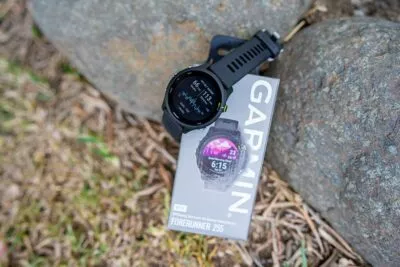
10 cosas que debes saber del Garmin Forerunner 255 y análisis detallado y pormenorizado de todo lo que ofrece el GPS gama media de Garmin.
SKU del producto: 010-02641-11
Marca del producto: GARMIN
Moneda del precio: EUR
Precio del producto: 265.00
Precio válido hasta: 2025-12-14
Producto disponible: InStock
8.6







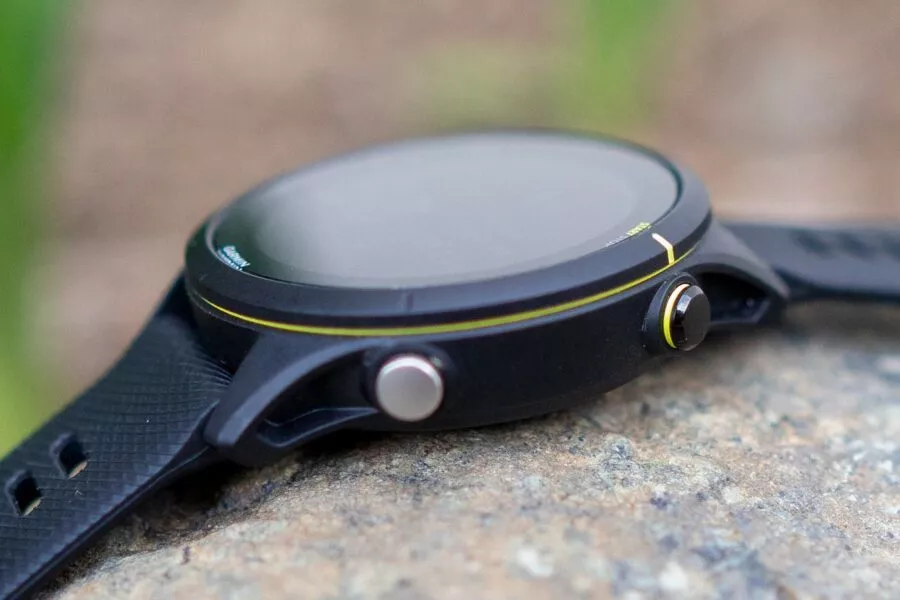

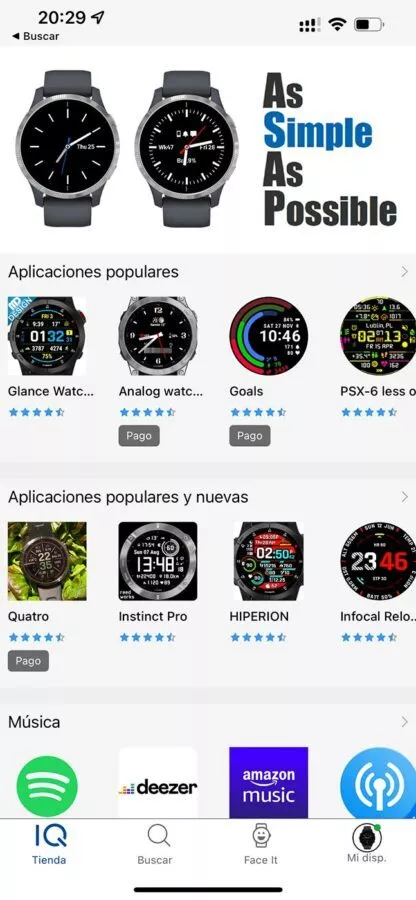
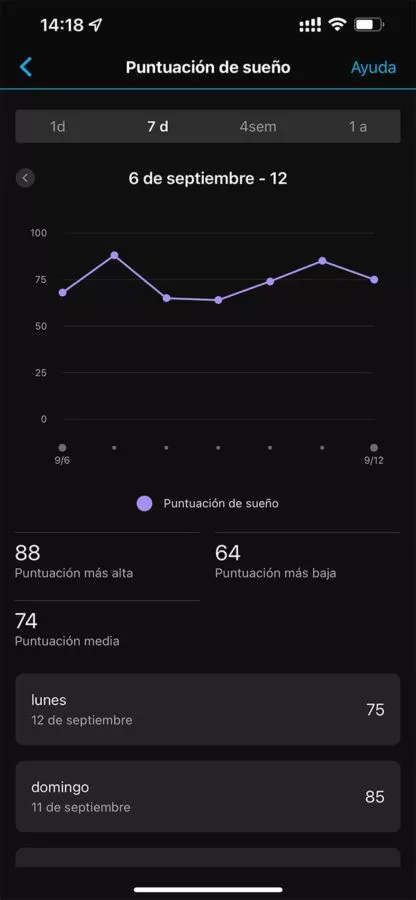
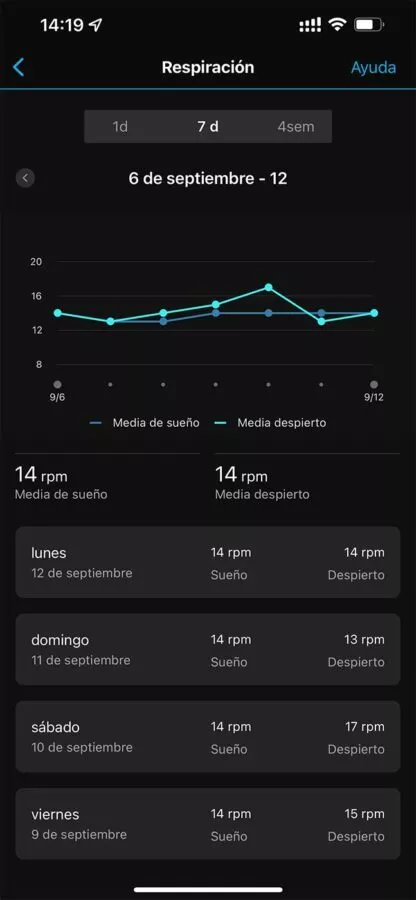
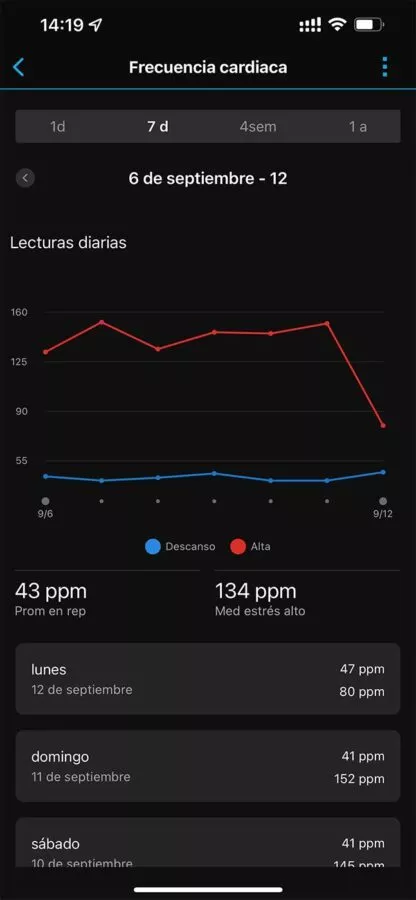
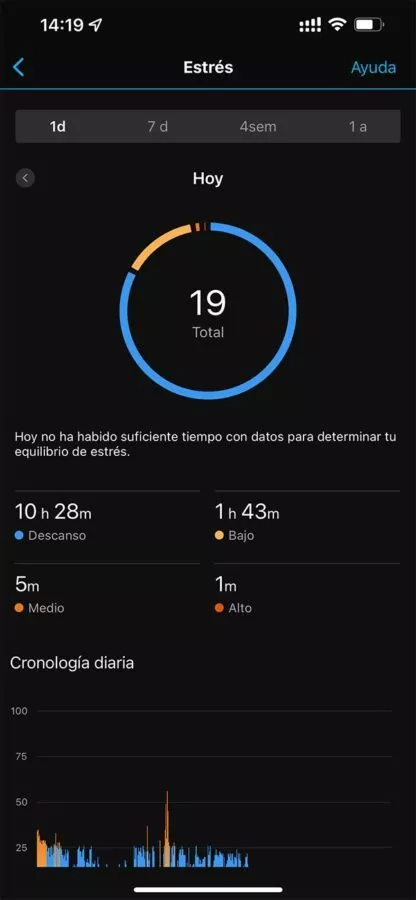
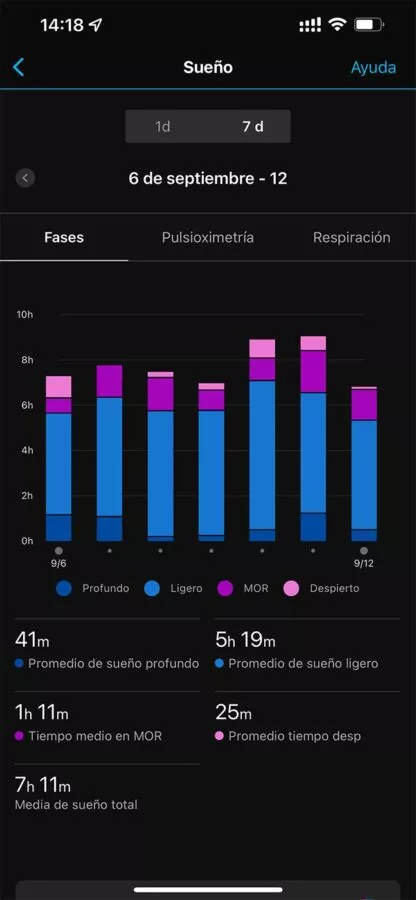
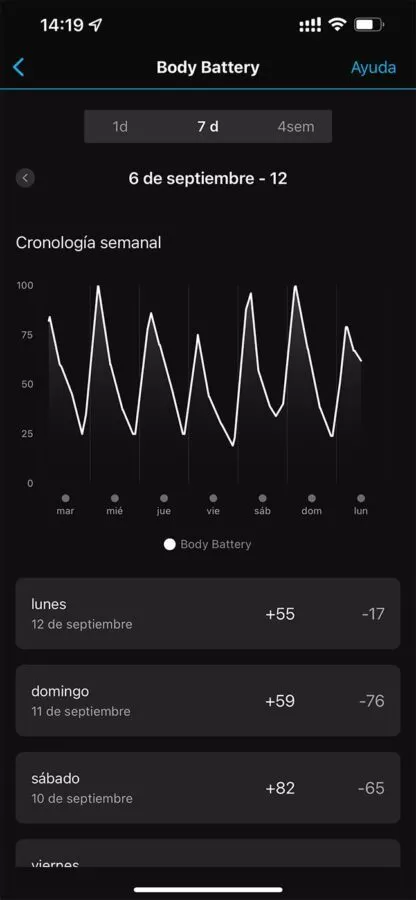
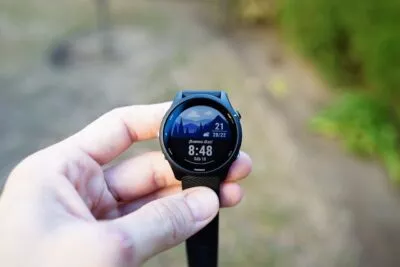
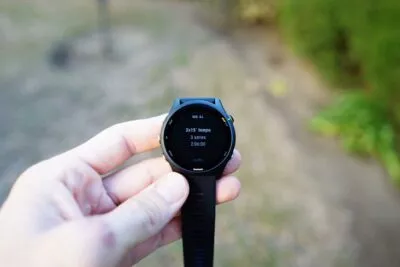
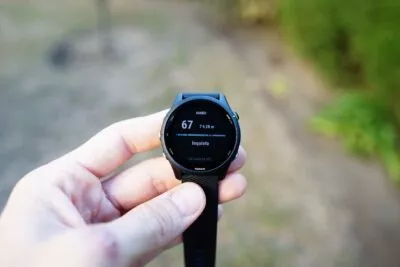
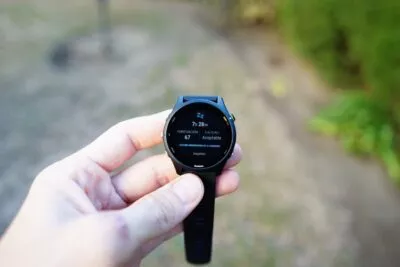
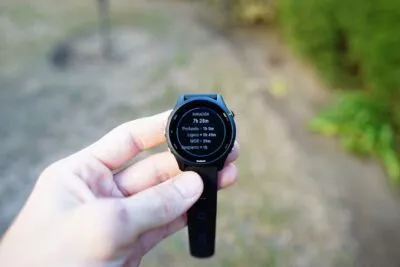
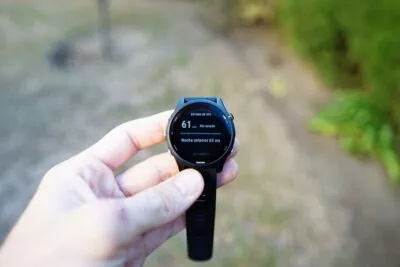
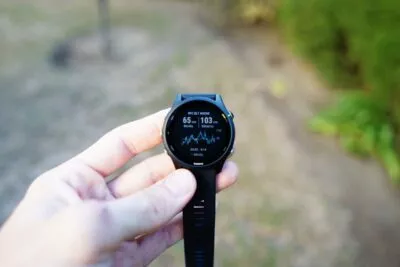
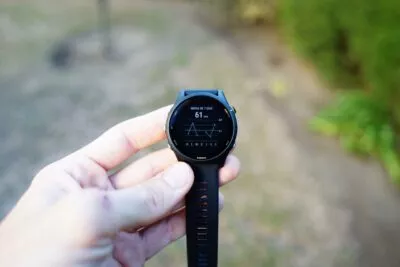
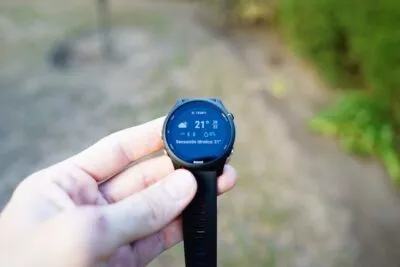

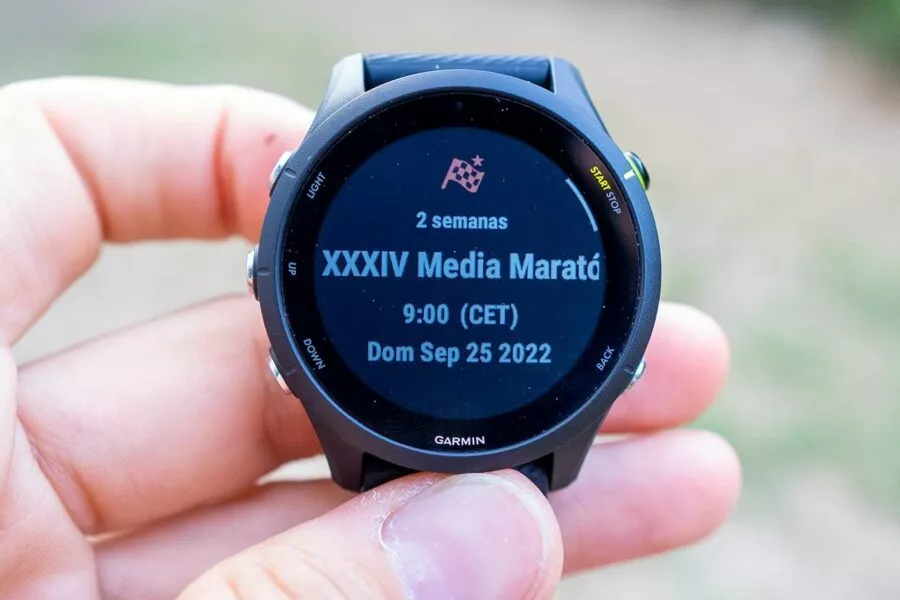
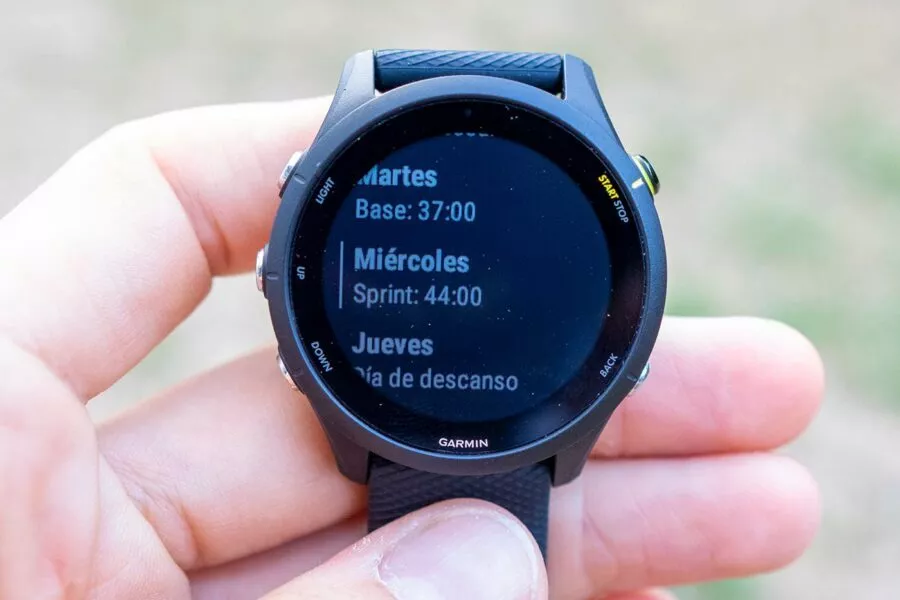
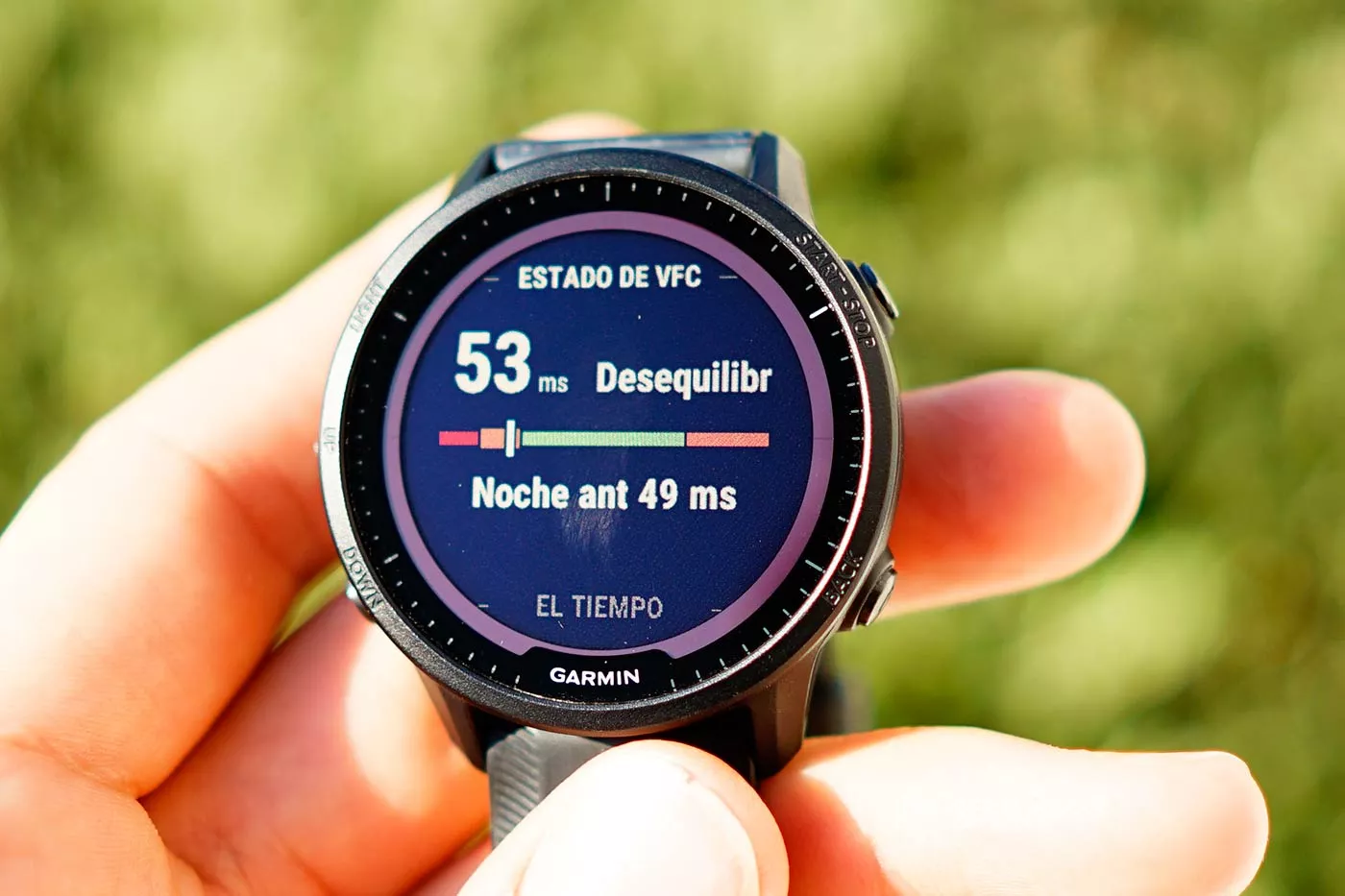
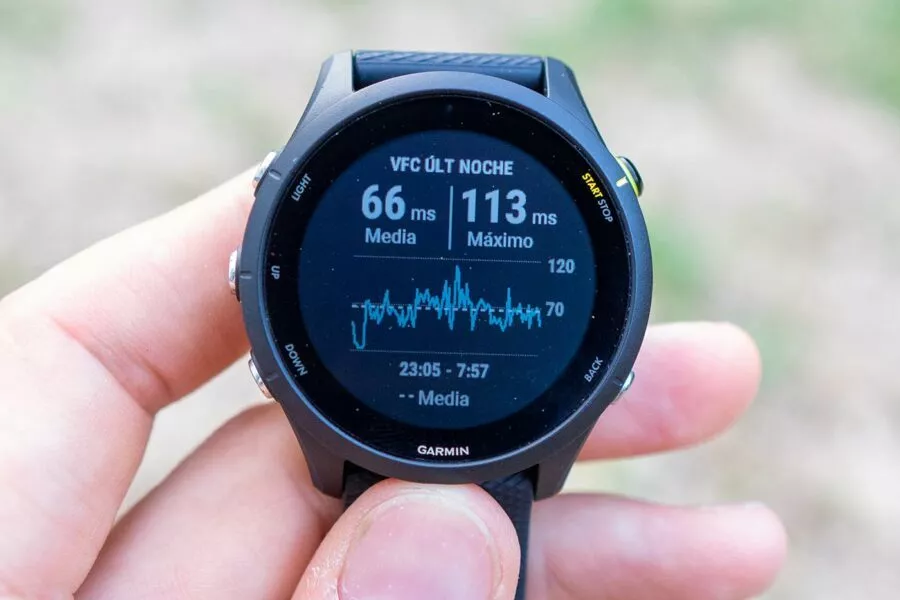
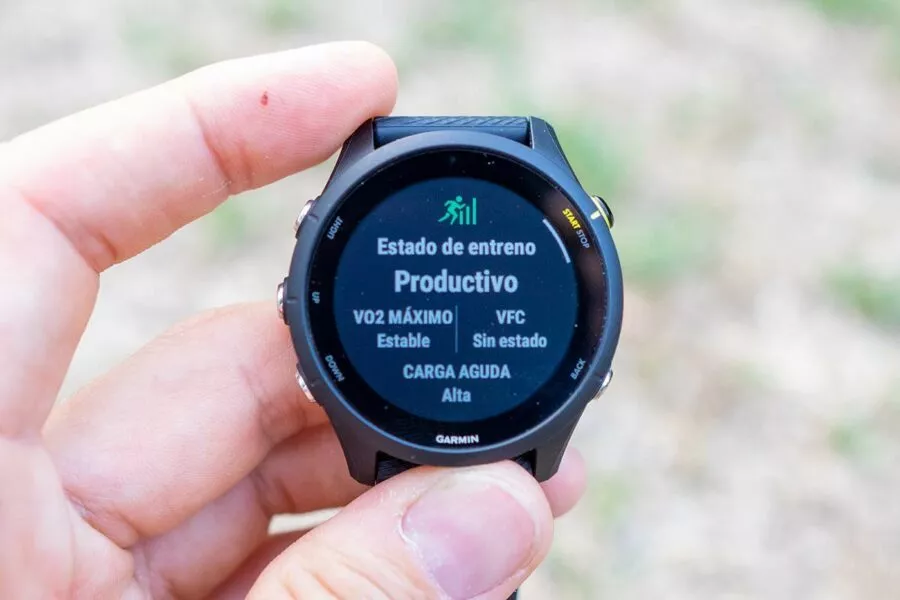
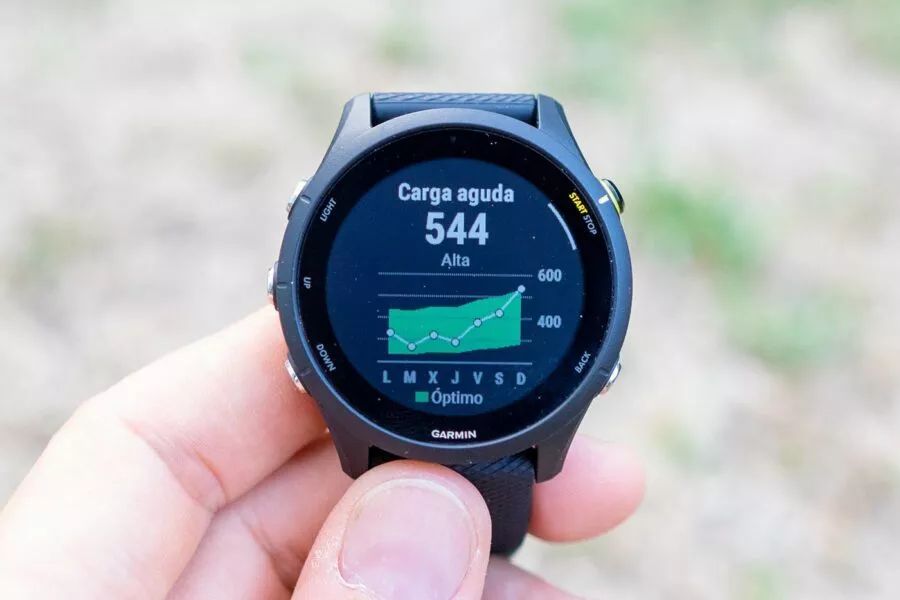
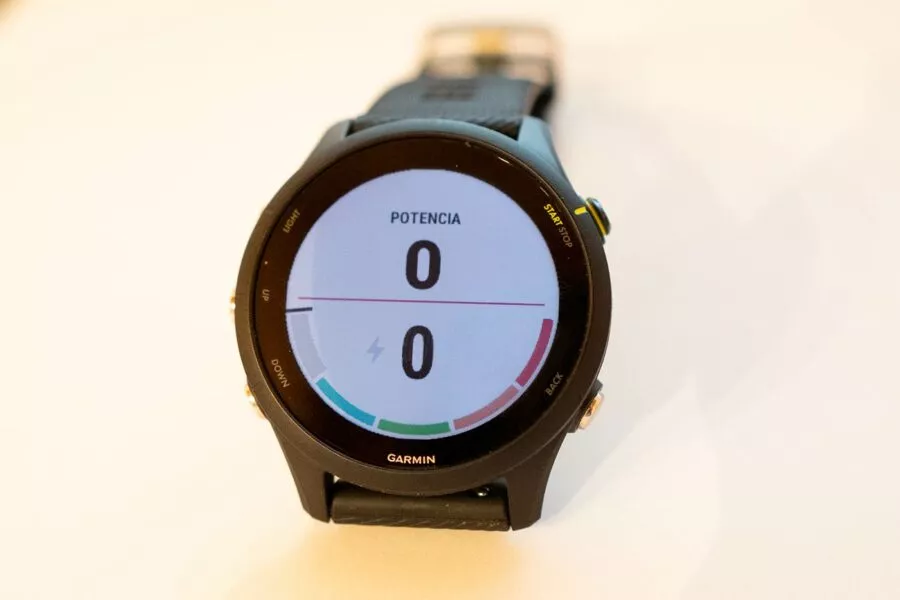
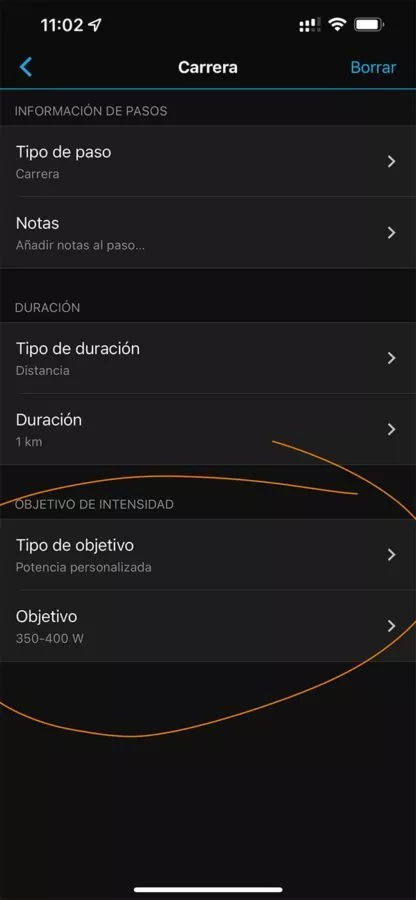
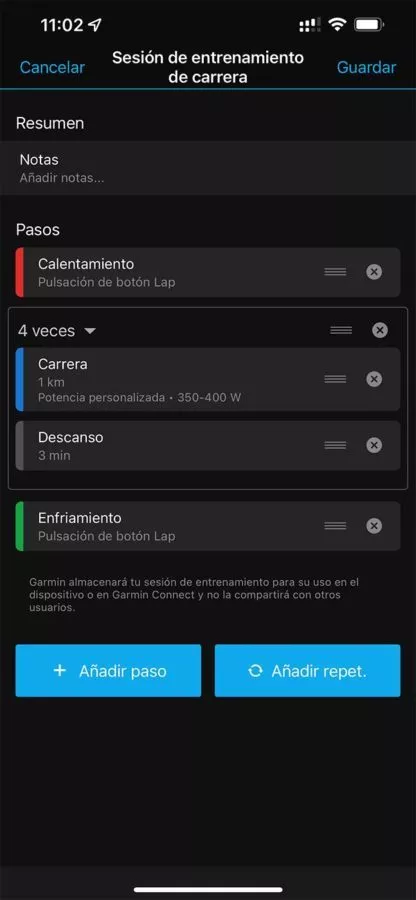

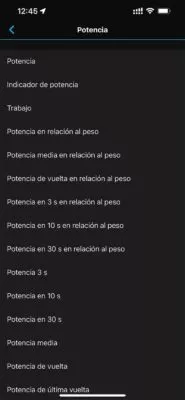



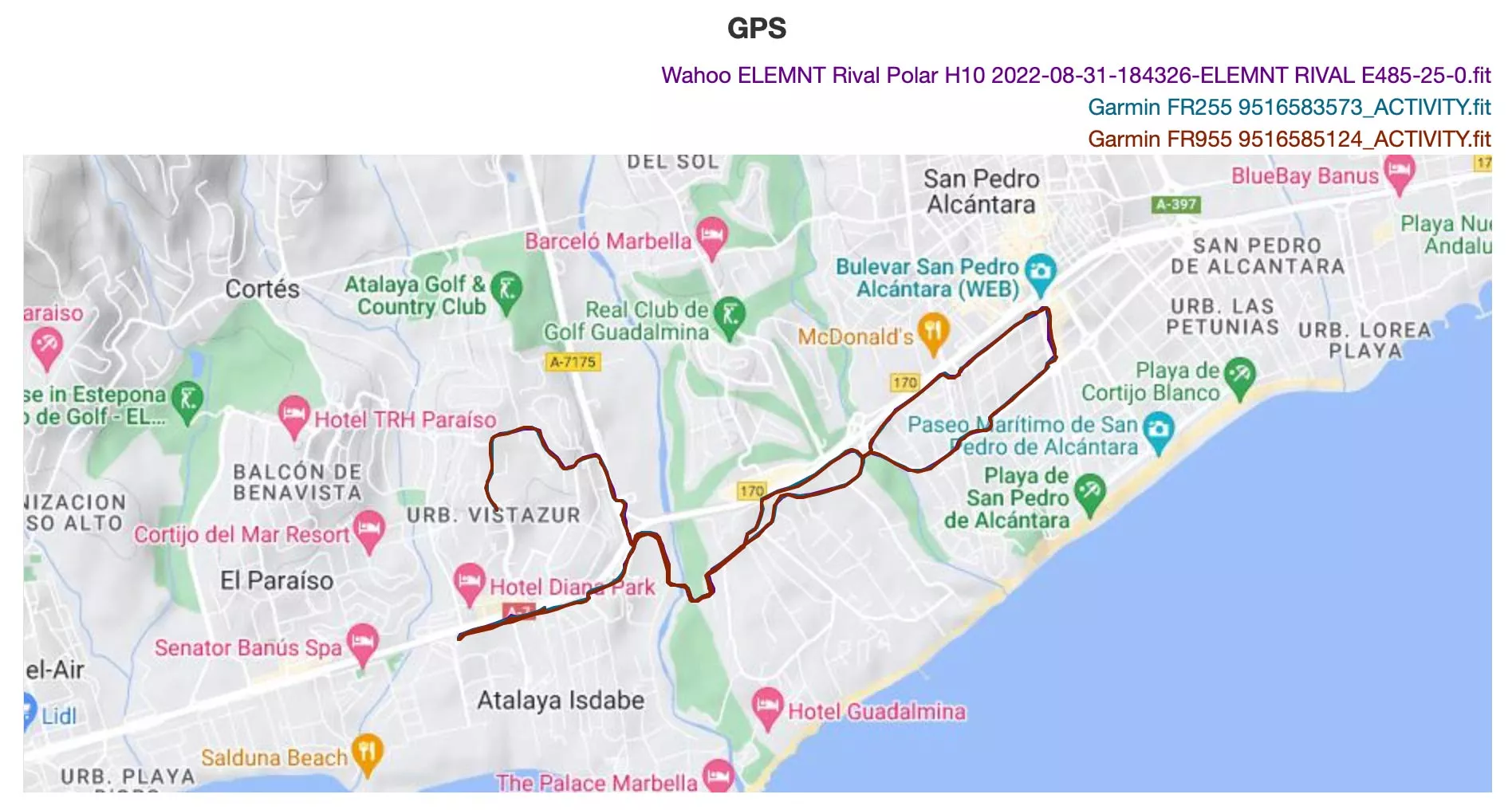
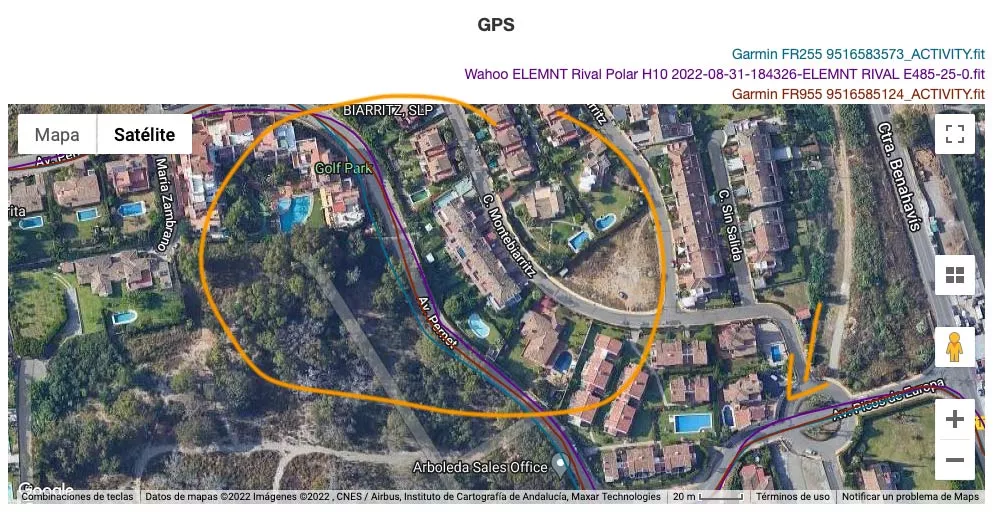
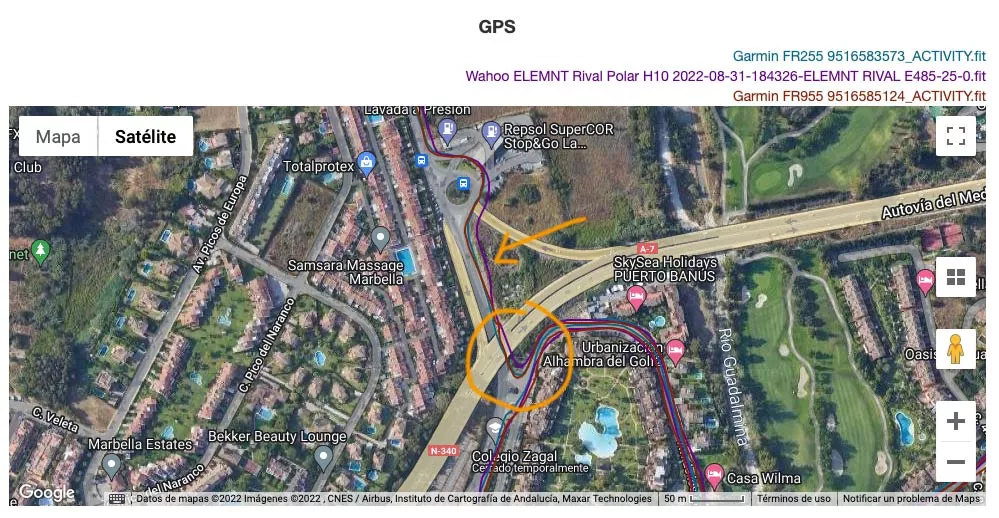
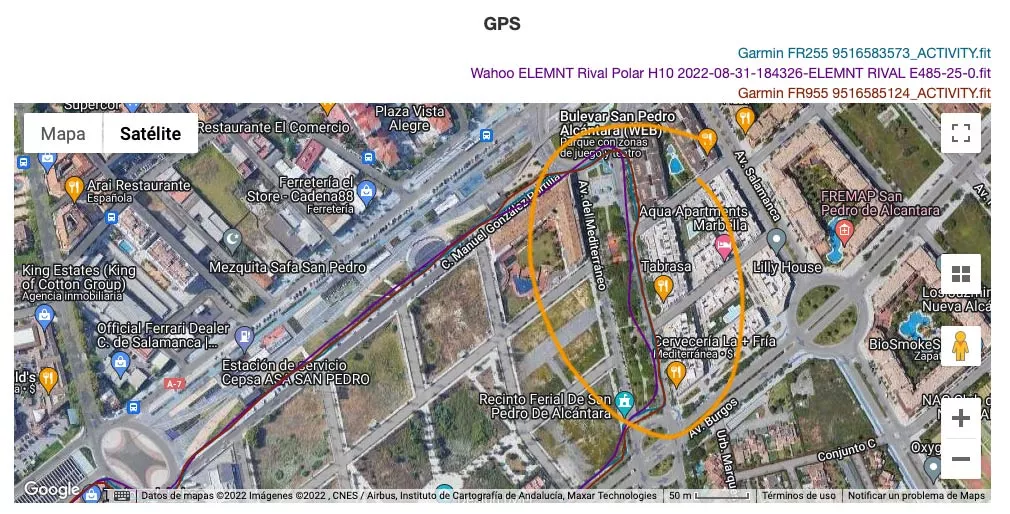



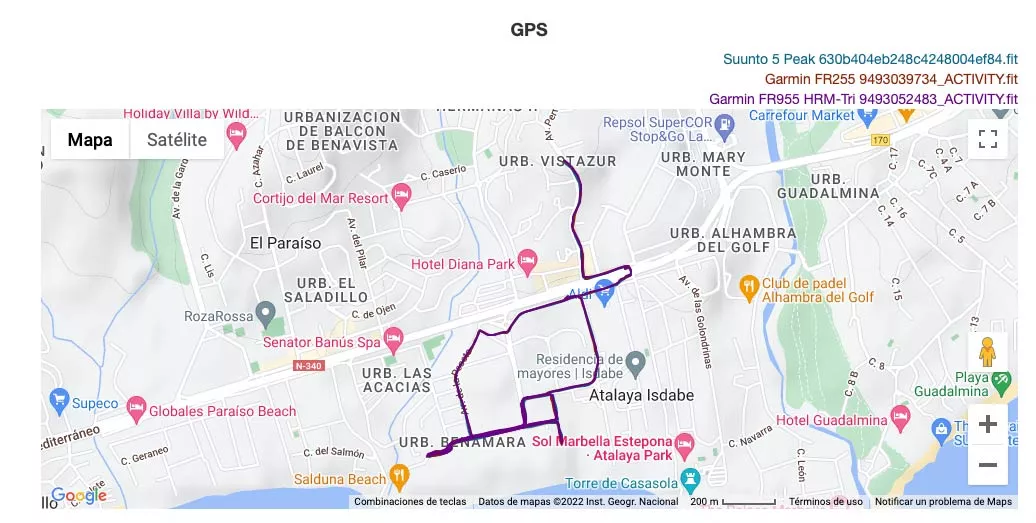
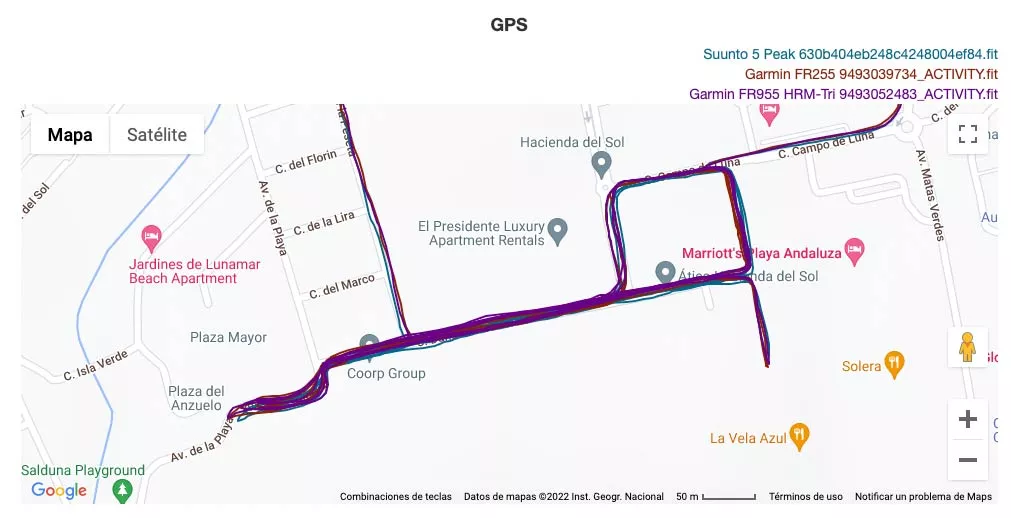
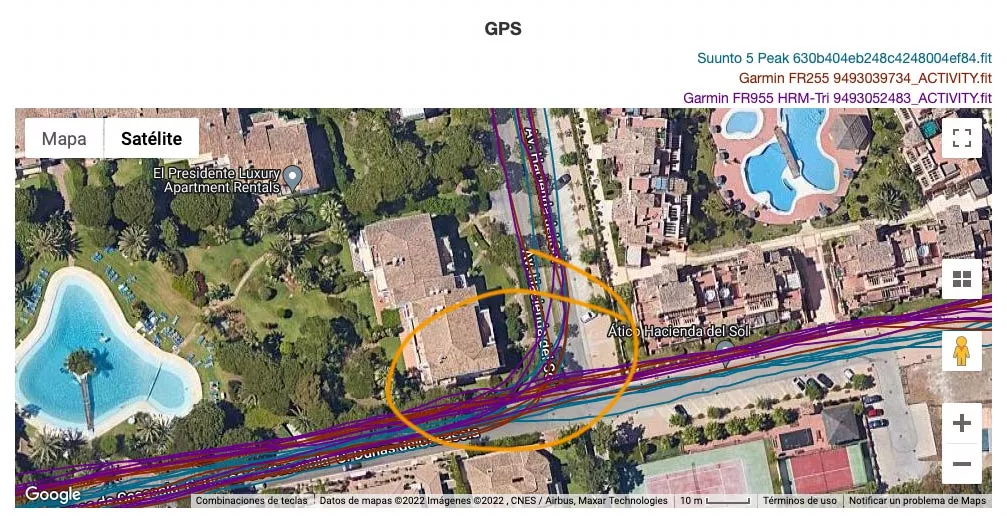

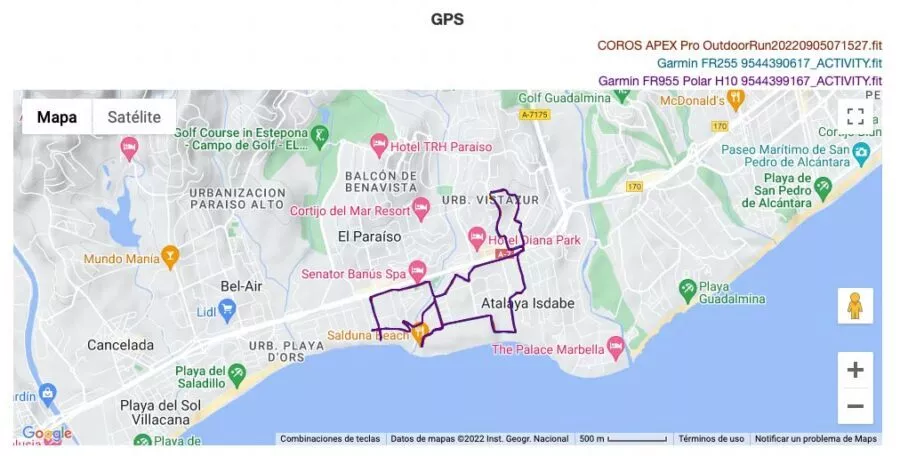
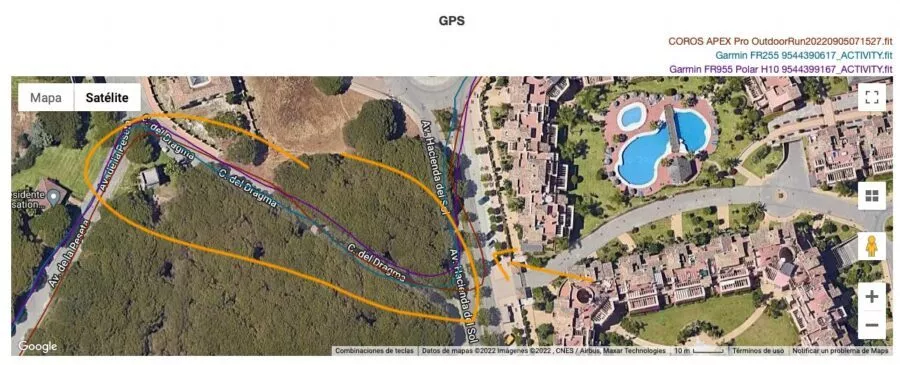
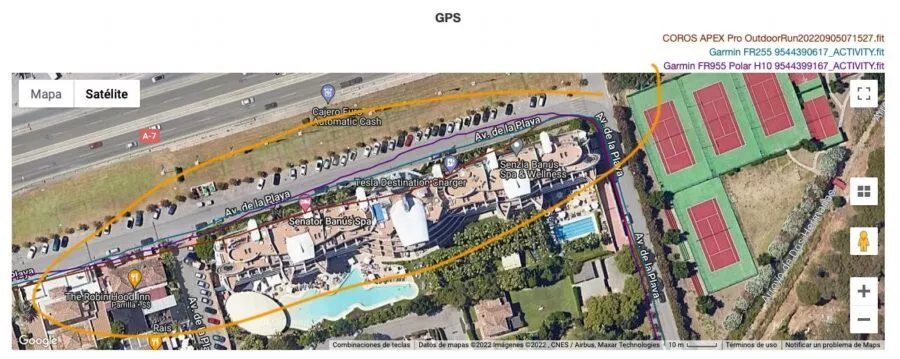
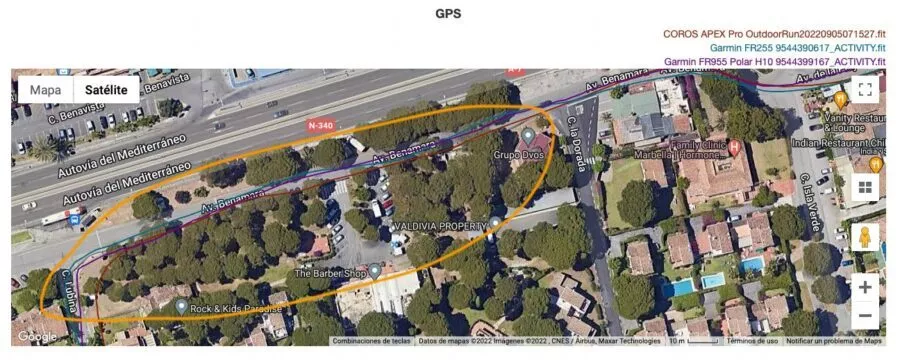
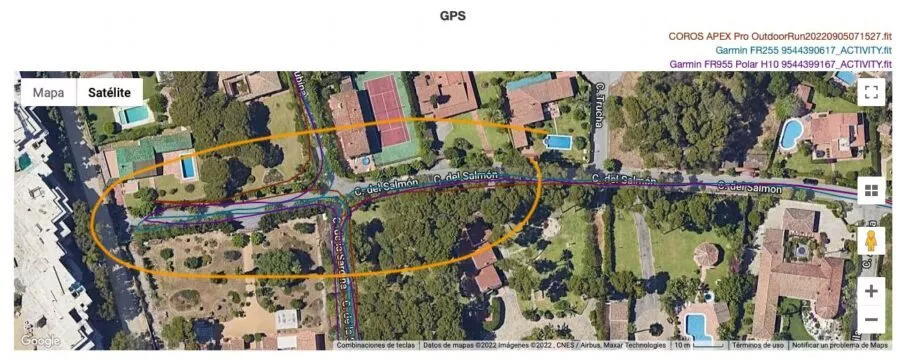
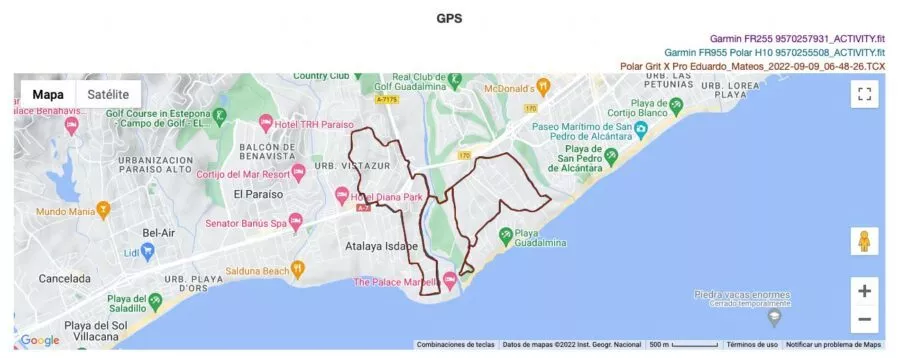
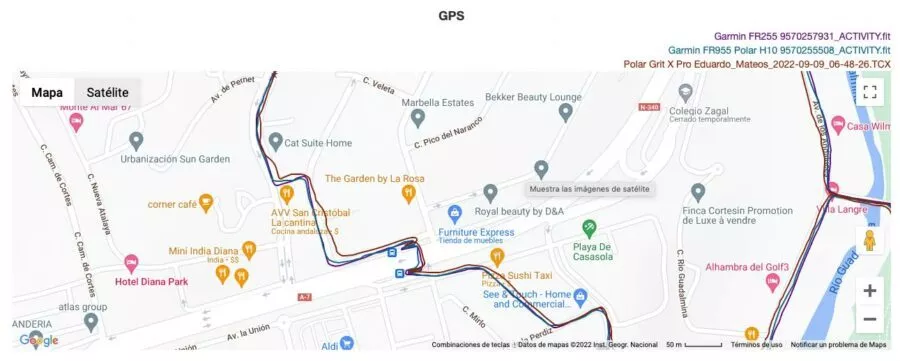
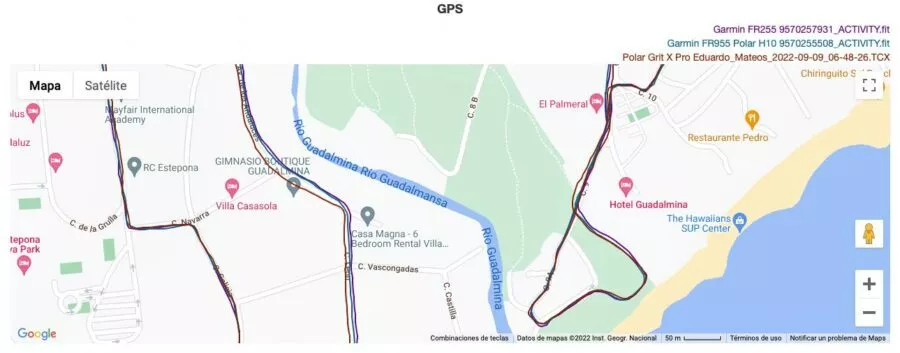
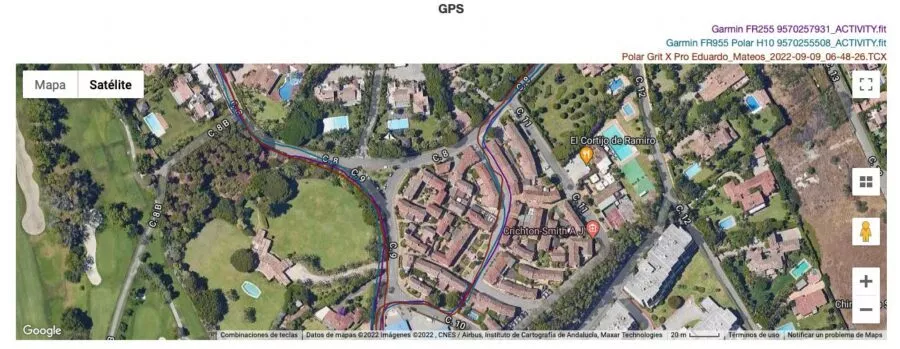
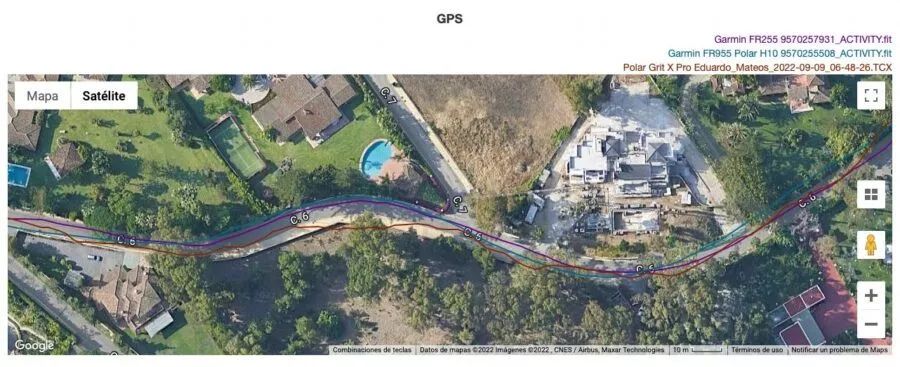

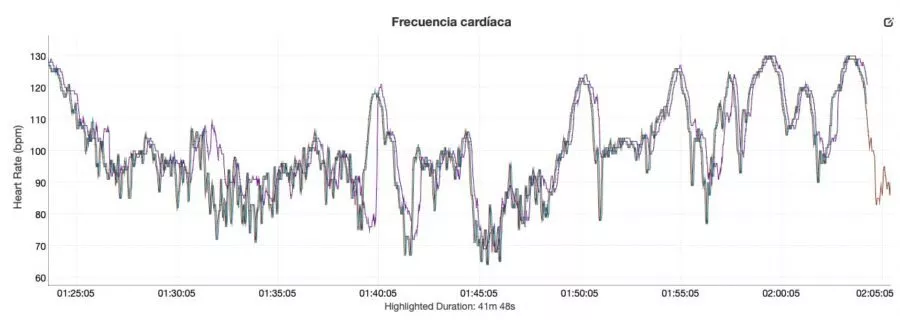

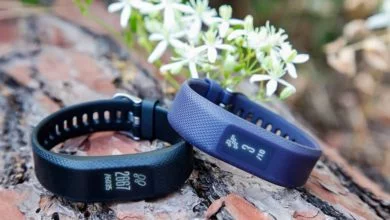
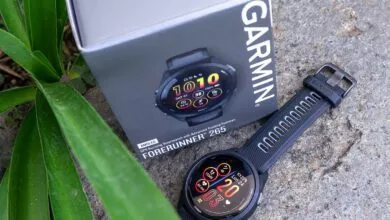
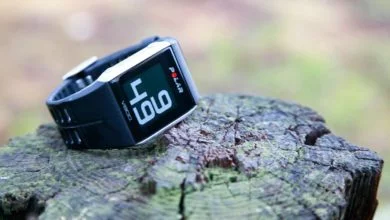
Gran artículo, he mirado las características y precisamente salvo mapas lo lleva todo . Como reloj para senderismo he visto que tiene también de todo en sus widgets ; barómetro en gráfico , altitud gráfica, alarma de tormenta,indicador tendencia clima ….además en campos de datos puedes poner incluso que diga la hora que amanece,anochece , presión barométrica……y en navegación te da todo excepto mapas. Puedes guardar una ubicación para utilizarlo como punto de interés en otro momento, funciones astronómicas…..de todo . Mi pregunta es : recientemente me han dejado un polar grit x pro que supuestamente es outdoor y tanto en widgets como en campo de entrenamiento no tiene ni la mitad de funciones para outdoor (senderismo, escalada trekking aventura) de lo que tiene este 255 ….me pierdo algo aparte de los materiales de construcción? Sinceramente me impresiona que el Garmin 255 este por encima del tope de gama polar outdoor… agradecería que me aclararas porque en principio lo veo muy claro, gracias de antemano
Son plataformas diferentes y enfoques distintos. Por número de prestaciones el Garmin tiene más, pero si se prefiere la plataforma de entrenamiento de Polar o sus métricas es la opción que hay que tomar.
Una pregunta rápida, en la versión music sólo se pueden cargar las canciones desde Spotify y Amazon Music? ¿Con Tidal por ejemplo no sería posible? Si estás reproduciendo música a través de un teléfono y no del reloj, ¿puedes cambiar de canción o pararlo usando el reloj?
Gracias por tus pruebas, me parecen las más sinceras de internet. Un saludo.
Gracias Dani. Tidal no tiene aplicación de Garmin Connect, por lo que no se puede utilizar de forma directa. Sí se pueden cargar canciones en memoria de forma local, conectando el reloj al ordenador.
Muchas gracias por responder 👍
Gran articulo, si señor!
Estoy mirando relojes, hasta ahora siempre o casi siempre he corrido por asfalto y mi fr235 se ha comportado de lujo.
Ahora bien, la idea es empezar a hacer algo de trail.
Carreras mas largas (mejor bateria), desnivel…..
Las dudas empiezan al ver el fr255 y el suunto 9 peak.
Cual me aconsejarias?
Muchas gracias
La diferencia principal va a estar en la plataforma (la de Suunto me gusta algo más) y materiales (bastante mejor el Suunto). Pero luego el Garmin tiene recepción multibanda, mejor sensor de pulso óptico y, por número de prestaciones, superior al Suunto.
Muy buen artículo, tengo que cambiar de reloj y mi principal opción es Garmin, para poder hacer entrenos en el rodillo desde el reloj. Suelo hacer mtb y carrera por el campo y tengo dudas entre el 255 y el instinct 2. ¿Cuál me recomiendas?
Por tamaño y calidad de pantalla sin duda me quedo con el 255
Hola. Muchas gracias por el artículo. Es de gran ayuda. He repasado y creo q no está puesto: hay diferencia de autonomía en cuanto al normal y el music?? Quiero decir. Si usar en el music el modo music tienen la misma autonomía o se penaliza por llevar este modo? Y una segunda pregunta por si la sabes. Cuánto dura la batería en modo música? He leído que en otros modelos la agota en seguida.
Gracias por tu ayuda!!
Sin usar música la autonomía es la misma entre ambos modelos. En el modo todos los satélites y escuchando música, la autonomía son 6,5 horas. Puedes ver todos los detalles aquí: https://support.garmin.com/es-ES/?faq=CTuaBhDD4566xreluhWFdA&productID=780139&tab=topics
Hola
Un artículo muy completo sobre este reloj
Mi idea es usarlo sobre todo en monte para rutas de trekking, sino me equivoco puedo instalar la app Wikiloc pero esta app creo que no hace navegación «turn by turn», he leído que por ejemplo el 945 lo puede hacer importando los archivos kml que exportaría de Wikiloc en los mapas del propio reloj, pero me gustaría saber si este modelo tiene ese modo de indicaciones en su aplicación de mapas.
Muchas gracias
Las indicaciones son las mismas, la diferencia con 945 o 955 es que éstos tienen mapas para poder ver la ruta, mientras que el 255 es simplemente la ruta lo que se ve en pantalla.
Compré en junio un 255 y estoy encantado. Echo de menos la potencia que veía en el vantage v, y por eso me planteo comprar el garmin pod. Es buena opción actualmente, o es esperable una renovación? Veo que es un producto que ya tiene unos años…
La previsión es que pronto llegue la potencia a través de la muñeca, sin sensor externo
Hola
Yo tengo el 225, y estoy pensando en renovar mi garmin, tener acceso al garmin coach puede ser una ayuda extra.
Por 150€ merece la pena optar por el 245 o es mejor optar por el 255 que cuesta aproximadamente 300€?
Gracias
Hola
Yo tengo el 225, y estoy pensando en renovar mi garmin, tener acceso al garmin coach puede ser una ayuda extra.
Por 150€ merece la pena optar por el 245 o es mejor optar por el 255 (+/-300€)?
Gracias
Depende de lo que busques. El 255 es más completo, más perfiles de deporte (triatlón, aguas abiertas…) y muchas más funciones en cuanto a seguimiento de carga de entrenamiento. Pero si quieres algo básico similar al 225 y más barato, el 245 es buena opción.
Estaré atento a las próximas ofertas.
Gracias
saludos
Hola
Me gusta los Garmin por tener en bicicleta de montaña
Por las características de 255 me decantaría por él pero muchas de las características que tiene nos las utilizaría ya que solo lo usaría para andar y hacer algo de senderismo
Me merece la pena gastarme en 255 o voy bajando de prestaciones hasta el 55
Livertrack!!….altímetro barométrico!!…
Entrenamiento!!….
Gracias
FR55 no lo recomiendo principalmente por la pantalla, para la diferencia de precio que suele haber es mejor opción el 245. De hecho, si sólo lo vas a usar para andar y senderismo, sería la opción más sensata. Ahora en Black Friday habrá buenas ofertas, permanece atento que se publicarán en la web todas ellas.
Esa opción la había barajado
Con el black friday miraré la ofertas que pueda haber y a lo mejor hago un desembolso mayor por el 255
No sea que me arrepienta con las mejores características que tiene el 255
La opción altímetro barométrico??
me interesa
Gracias
Buenos días,
estoy dudando entre el 945 y el 255 music. Me gusta lo del ClimbPro y lo de los mapas, pero por otro lado, me da miedo que el 945 quede abandonado.
¿ Sabes si hay previsión de que el ClimbPro llegue a incorporarse al 255?
Por el mismo precio,¿ cuál me recomendarías? Suelo hacer 2/3 entrenos de atletismo y 1 salida en bici por semana.
Gracias de antemano.
Un saludo!
Si vas a hacer uso de mapas y ClimbPro es 945 va a ser mejor opción. ClimbPro es algo que no va a llegar al 255, y en la parte de ciclismo la verdad es que es bastante útil
Llevo 2 años con el FR245 (comprado en tus enlaces de black friday), en el apartado deportivo me sobra (salvo por las carencias en temas de musculación o similar, lo que más practico es MTB con cinta de pecho y alguna caminata), pero cojea un poco en la parte de salud. Veo que este trae bastantes mejoras en ese aspecto, en parte gracias al nuevo sensor. ¿Vale la pena el cambio centrandonos en ese aspecto? Me interesa más la parte de salud que la deportiva. Barajo otras alternativas como el Venu 2 (creo que le faltan cosas como el tiempo de recuperación, training effect, etc.), u otros más «Smartwatch», como Apple Watch, Huawei Watch GT 3, Amazfit GTR 4… El Apple Watch se va de precio, y no me apetecería prescindir del SpO2 y el ECG (versión SE), a demás, creo que hay muchas mediciones que no hace o dependes de aplicaciones de terceros, el Huawei penaliza bastante con iOS, y Amazfit no me resulta muy confiable por la gestión de datos y los fallos que se han reportado historicamente con sus sensores. Por otro lado si sigo en Garmin, puedo aprovechar las compras y descargas de Garmin IQ.
Entiendo que por «salud» te refieres a las funciones de carga de entrenamiento, variabilidad de pulso, etc. Todo eso no lo tiene el Venu 2 ni lo tendrá, pues está orientado a ejercicio más casual. Apple Watch hace hincapié en la parte de salud, pero más para el día a día (nada de deporte). En cuanto a Huawei y Amazfit, muy básicos en ese sentido.
Básicamente es por saber si el salto es sustancial entre el 245 y el 255, en cuanto a sensor y mediciones. Sobre el papel añade cosas interesantes, y va más allá respecto a las que ya hace el 245.
Sí, el 255 es un salto cualitativo con respecto al 245 en todos y cada uno de los aspectos.
Gran reportaje, a casi igualdad de precio (50€ más el fenix) ¿el 255 music o el Fenis 6x pro? Hago trail y mtb
Para trail y si vas a hacer uso de la navegación, el Fenix
Hasta ahora he funcionado sin mapas, con un V800.
Gracias por tu artículo. Por mucho, el más claro en español que he encontrado. Saludos
Buenas tardes, tengo el forerruner 645, y quería renovarlo, estoy entre el 245 o 265. Cual se asemeja más? Hay mucha diferencia entre estos dos últimos? Gracias.
Buenas reseñas, son de agradecer!!!!
Duda y opinión!!!
Voy a renovar el GPS para correr, trail y rutas de monte (varios días incluido).
Duda entre 255 y 955.
Me explico:
– mtb: uso el Edge 530 (diferencias con el 830, táctill: con guantes en bici no quiero; y navegación a puntos de interés: no me interesa).
– a ambos, 255 y 955, se le pueden meter rutas? (por ejemplo de Wikiloc, a través de Garmin Connect).
– rutas de montañas, suelo llevar mapa en físico y aparte la ruta descargada en offline con mapa en el móvil (tipo Wikiloc).
¿?
Ambos soportan rutas, la diferencia está en los mapas. Pero si utilizas otras formas para orientarte no creo que sea imprescindible. Y supongo que con la autonomía del 255 tendrás suficiente.
¡Enhorabuena por esta reseña y todas las de la web! Son fantásticas.
Quería hacerte una consulta. Ahora mismo, está el Garmin 745 por 270-300 E, por debajo de las mejores ofertas del Garmin 255. En tu opinión, ¿cuál merece más la pena? Soy un deportista que practica triatlon a nivel popular, pero sobre todo corro y vengo del Suunto 5. ¡Muchas gracias!
Gracias Alejandro
A día de hoy considero el 255 más interesante, salvo que quieras ahorrar esos 30€ teniendo música o que el ClimbPro sea algo imprescindible. En los enlaces listados en la página, a través de TradeInn, lo tienes a buen precio.
Muchas gracias, Eduardo. Además de la evidente mayor autonomía, ¿qué mejoras trae el 255 respecto al 745?
GPS, sensor óptico, pantalla, HRV, resumen diario, potencia en carrera…
Pase del FR310 al 255 music. Verdaderamente llevaba años usando mi vieno 310, ya que siempre me dije que iba a cambiar cuando salga uno que pueda escuchar música sin llevar el celu… salieron y no encontraba uno que rinda con e multideporte como el 310, hasta que vi este y sorpresa! Mi novia me lo regalo! Ahora a darle con todo! Gracias por la reseña!!! Muy detallada
Excelente reseña!
El modelo Tidal tienen todo lo mismo excepto la música?
Este 255 se puede para trail y senderismo? se le pueden bajar mapas en Garmin Connect
Supongo que te refieres al modelo Music. Sí, todo igual.
Se puede usar para hacer trail, pero no dispone de mapas.
El altimetro es preciso.
Sí, no he tenido problemas
¡ muchas gracias por el articulo! ¡es estupendo!
Tengo un Vivoactive 3 que me ha dado varios problemas (altimetro no funciona, la vibracion a penas se nota, %bateria erroneo y poca duración). Practico habitualmente fitboxing, salgo a correr de vez en cuando y senderismo. Mis dudas son:
– a pesar de no tener mapas de forma nativa, he visto que hay aplicaciones disponibles, como dwmap, compatible FR255. Me gustaria saber qué opinas de estas apps y cómo se manejan con botones sin pantalla tactil.
– con la aparición del FR265, ¿es posible que este modelo quede relegado de cara a nuevas actualizaciones en poco tiempo?
– ¿como de sensible es el altimetro barometrico y en general estos relojes a movimientos bruscos? Me refiero a los golpes contra el saco de boxeo. Tengo sospechas de que eso haya podido causar el problema con mi VA3 y por eso motivo, estoy considerando tambien el Instinct 2 que cumple con estándares militares.
Muchas gracias
Tanto el 255 como el 265 tienen navegación (sin mapas) de forma nativa. No hace falta instalar ninguna aplicación.
255 y 265 son el mismo reloj, sólo cambia la pantalla. Las novedades que lleguen a uno lo harán también al otro.
En general, electrónica e impactos se llevan bastante mal. Yo no llevaría el reloj puesto al golpear el saco, y el Instinct 2 tampoco.
Buenas tardes, lo primero enhorabuena por tu trabajo es estupendo.
Tengo una gran duda, soy usuario de polar y Garmin, me mata el auto lap de Garmin que se interrumpe con los lap manuales, en polar va por separado de los lap manuales para el día día me resulta muy cómodo, y también me gusta mucho polar flow, pero la precisión GPS de mi vantage v deja bastante que desear sobre todo en zonas con edificios y árboles, tengo intención de cambiar el reloj y estoy entre en Polar vantage v2 que lo puedo encontrar por 220€ en reacondicionados de Amazon o el Garmin 255 music que creo que lo puedo conseguir por unos 300 €, este como buen ha descrito en ti artículo tiene bastante precisión de GPS, cual me recomendarías.
Gracias Fernando.
Más que el Vantage V2, que es prácticamente lo mismo que tu Vantage, te recomiendo el Pacer Pro que además te va a salir más barato que el V2.
Con respecto al 255, ciertamente vas a encontrar bastante mejor rendimiento de satélites que en Polar
Hola, tengo un forerunner 645, y quiero renovarlo, estoy entre el 255 y 265, cual se asemeja más, hay mucha diferencia entre estos dos últimos? Gracias
Puedes ver el análisis del FR265 aquí: https://www.correrunamaraton.com/garmin-forerunner-265-review-opinion/
Hay también una sección específica con respecto a la comparativa entre ambos. Pero en resumidas cuentas la diferencia está en la tecnología de la pantalla. Echa un vistazo a este vídeo donde explico las diferencias entre pantalla transflectiva y AMOLED: https://youtu.be/UzbLjW5gD3E
Tengo , tengo un forerunner 965 para entrenar únicamente y quisiera comprar otro Garmin para el día a día ( para la noche y mediciones diarias) . Me recomiendas alguno ? Pensé en Venu SQ2 o forerunner 255 . Que opinas ?
Ten en cuenta que si bien los datos de actividad diaria sí se sincronizan, datos de descanso como HRV aún no… personalmente creo que deberías usar el 965 para todo, pero si quieres algo básico de diario el Venu SQ2 puede ser opción
Hola, crees que el forerunner 255 me sería útil para entrenamiento de fuerza, cardio, tenis, senderismo o me recomendarías otro ( aunque sea otra marca)?
Para ese uso y sin necesidad de métricas específicas u otros aspectos, más o menos todos los relojes te van a aportar la misma información. Y sí, el 255 es un reloj que encaja en ese uso, siempre que no necesites mapas de navegación.
Buenos días. Lo primero, muchas gracias por tus análisis y objetividad, se agradece mucho. Voy a comprar mi primer SmartWatch y lo voy a usar para senderismo principalmente y alguna vez bici (unas dos veces por semana). Me gustaría pasar las rutas de Wikiloc al reloj y así seguir las rutas sin depender del móvil. A igualdad de precio, tirarias por el 255, el Coros Pace 3 o el Suunto 9 peak? O con el 245 sería suficiente? Soy de muñeca pequeña, por lo que no me gusta que sea un reloj muy aparatoso. Muchas gracias
De entre esos modelos y para ese uso, te diría que el 255 es con el que más cómodo te vas a encontrar.
Hola, Eduardo. Vuelvo a la carga… ¿Cómo ves Garmin 255, Polar Pacer Pro y Suunto Racer? ¿Con cuál te quedarías para un uso intensivo de running y esporádico de ciclismo y natación? Muchas gracias.
El que más me gusta de los tres es el Suunto Race, también es el más caro y el que mejor hecho está…
Buenos días. Lo primero, muchas gracias por tus análisis y objetividad, se agradece mucho. He comprado este reloj gracias a tu análisis y después de varias semanas con el no puedo estar mas contento. Lo único tengo una duda que no he logrado solucionar, cuando se configura ritmo en las actividades, estamos hablando de ritmo o ritmo medio? Y esa pantalla en concreto no he encontrado donde poder configurararla para cambiarla.
Muchas gracias!
Pues seleccionar el campo que quieras, tanto ritmo medio como ritmo instantáneo. Debes configurar el perfil para seleccionarlo